4377
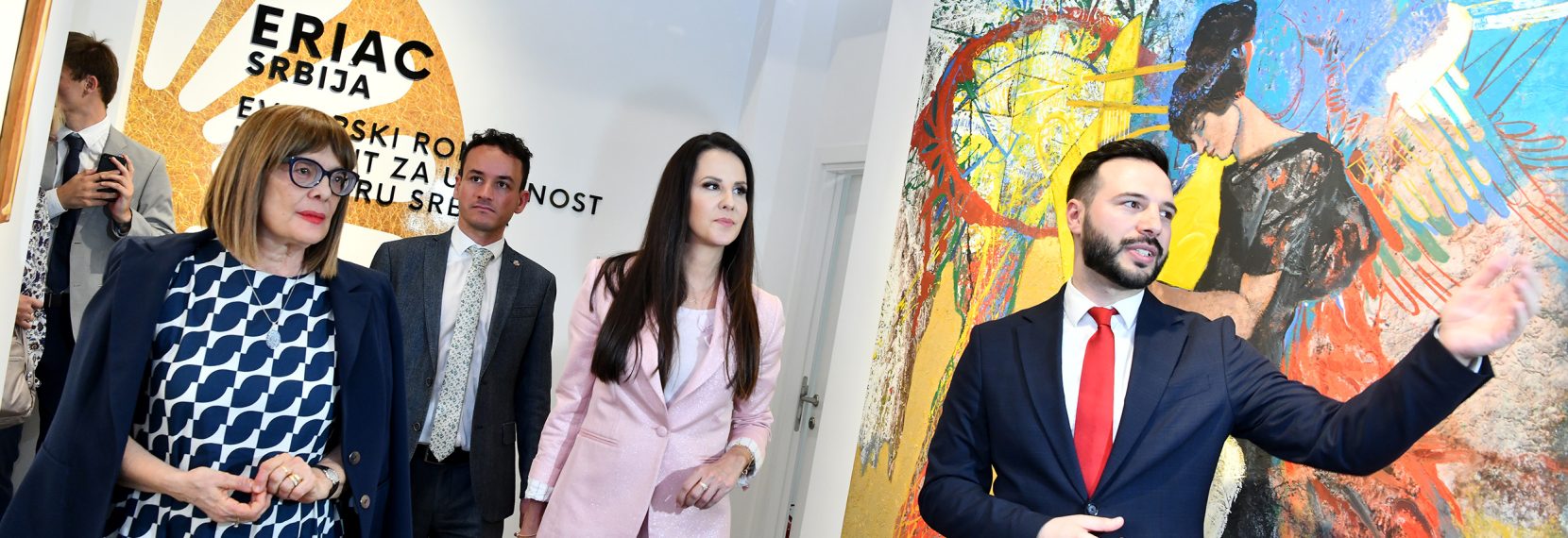
As European Roma Institute for Arts and Culture – ERIAC celebrated its first birthday in 2018, ERIAC learned of the interest of the Serbian Government in opening a branch office advocating and representing the ERIAC cause in Serbia and joining the international political, social, and cultural alliance for the recognition of Roma leadership, and arts and culture. Meetings between Aleksandar Vučić, President of Serbia, and Željko Jovanović, ERIAC Board Chair, commenced in 2018, in relation to the contribution of the Serbian government to the ERIAC mission. The process of establishing ERIAC Serbia is closely aligned with the ERIAC Policy on local branches, as well as respecting the original roadmap and schedule approved by the ERIAC Board.
In October 2019, ERIAC Serbia registered under Serbian legislation as an association. The statute and constellation of the founders – ERIAC Berlin Headquarters, Željko Jovanović (ERIAC Board Chair), and Timea Junghaus (ERIAC Executive Director) – guarantee the relationship of connectedness and dependency of the ERIAC branches upon the coordinating ERIAC Berlin-based headquarters. In November 2019, ERIAC Serbia signed a lease agreement for office space with the Property Directorate of the Republic of Serbia (Republička agencija za imovinu Republike Srbije).
The ERIAC office space is located in the heart of Belgrade, at Majke Jevrosime St. 51. The ERIAC office and art space occupy a total area of 137.5 m2, on the ground floor, with a street-access entrance, and a proper open space suitable for art exhibitions and events.
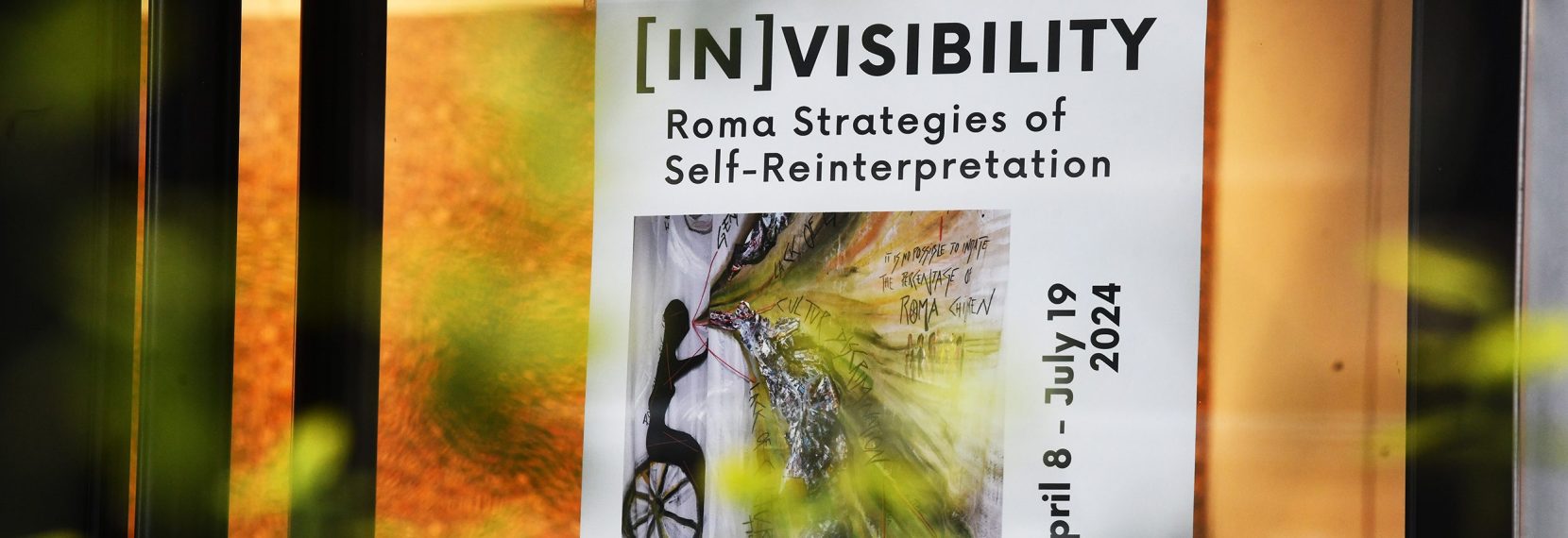
On view in the ERIAC Serbia gallery:
Majke Jevrosime 51, Beograd, Serbia
Monday to Friday 10:00 – 17:00
Artists:
Luna de Rosa, Jake Bowers, Ioanida Costache,
Nino Nihad Pušija, Mina Karadžić, Zoran Tairović
Curated by ERIAC
“We, Roma, have preserved our history mainly in oral form, while the written history of Roma mostly comes from non-Roma. Fortunately, over the centuries, we also had the resource of our art as a language. Art has a special role in the lives of Roma: our families rely on it, as it soothes our pain and suffering within the depths of our joys and hopes. It tells our stories and reveals our worldview.”
Mensur Haliti
The history of the Roma has always been an enigma revealing a remarkable resilience among people who endured harsh circumstances without resorting to violence. Amidst shifting borders and the vanishing of entire nations, the Roma endured. The Roma history – our history – is intricately and inseparably connected to the history of Europe and its nations yet it remains a hidden gem of humanity. The multiple contributions Roma made to European cultural, social, economic, and even linguistic landscapes of Europe are still to be articulated, represented, and discovered.
“(In)visibility – Roma Strategies of Self-Reinterpretation” initiates a dialogue about the profound presence, yet invisibility, of Roma in the European context. Through artistic expressions and creative strategies, it raises the question: how can Roma take control of the narratives and present themselves in ways that empower Roma identity?
The answer is found in the process of deconstructing stereotypes and re-examining the historical and contemporary marginalization of Roma in Europe. While Roma are often perceived through the lens of poverty, criminalization, or exoticism, an alternative narrative is proposed – that of contribution, achievements, beauty and pride.
The exhibition calls for a re-evaluation of existing powers and privileges, and advocates for the promotion of a more inclusive and just society. Through artistic tactics and strategies, Roma are encouraged to claim their place in European society, amplifying their voice and presence, while simultaneously contributing to the richness of Europe’s cultural diversity. The exhibition opens up the space for Roma to reclaim their right to have their allegories and symbolic representations, deconstructing stereotypes that confine them within European culture and history.
Artists use their individual visual vocabularies to enable a glimpse through time in honor of the past and to offer ways to continue imagining interdependence and inseparability of existence in the community, while simultaneously opening the doors to creating new, more tolerable futures. While art cannot save our people from daily hardships or historical uncertainties, it can call us and reconnect us to ourselves as a living force.

08.04.2024, Belgrade ERIAC Serbia, International Roma Day, Maja Gojković, Minister of Culture of the Republic of Serbia, Miguel Waltereit, First Secretary of the Embassy of the Federal Republic of Germany in Serbia, Tamara Vučić, the First Lady of the Republic of Serbia, Bratislav Mitrović, Acting Director of ERIAC Serbia
Hosted by:
Belgrade, April 8, 2024 – The European Roma Institute for Arts and Culture (ERIAC) Serbia, in collaboration with the Roma Education Fund, Roma Entrepreneurship Development Initiative, and Roma for Democracy Serbia, proudly hosted the grand exhibition opening of “(In)visibility – Roma Strategies of Self-Reinterpretation” on April 8, 2024, in honor of International Roma Day.
The event, held at the ERIAC Serbia Gallery in Belgrade, commenced with welcoming remarks from Mr. Bratislav Mitrović, Acting Director of ERIAC Serbia, and esteemed guests including Her Excellency Madam Tamara Vučić, the First Lady of the Republic of Serbia, Her Excellency Madam Maja Gojković, Minister of Culture of the Republic of Serbia, and Mr. Miguel Waltereit, First Secretary of the Embassy of the Federal Republic of Germany in Serbia.
A thought-provoking reflections segment titled “(In)visible Everyday Challenges, Contributions & Potential of Roma” followed, featuring insights from Jelena Reljić of Roma for Democracy Serbia, Žarko Savić of Roma Entrepreneurship Development Initiative Serbia, and Sibina Golubović of the Roma Education Fund.
The highlight of the evening was the conceptual, multimedia art performance titled “Space of Misunderstandings” by Luna de Rosa, a Roma artist from Germany. Luna’s performance delved into the intersectional experiences of Roma women, offering a compelling exploration of identity, visibility, and empowerment. Attendees were also treated to a piano interlude titled “(In)visible Harmonies” by Vitomir Jovanović, a young Roma prodigy from Serbia.
The exhibition, curated and guided by Bratislav Mitrović, showcased the works of prominent artists including Luna de Rosa, Zoran Tairović, Nihad Nino Pušija, Mina Karadžić, Jake Bowers, and Ioanida Costache. Through diverse artistic expressions, the exhibition illuminated the complex narratives on Roma identity, explored intersectionality as a lived experience, and highlighted the historical contributions of the Roma community, challenging stereotypes and advocating for social justice and greater recognition of the contribution of Roma to the European cultural heritage.
The event concluded with informal networking, fostering connections and collaboration among attendees committed to promoting Roma arts and culture.
This event was supported by the Embassy of the Federal Republic of Germany and the Ministry of Culture of the Republic of Serbia.
The “(In)visibility – Roma Strategies of Self-Reinterpretation” exhibition will be open to the public at the ERIAC Serbia Gallery (Majke Jevrosime 51, Belgrade), from April 8 to July 19, 2024. Visitors are invited to engage with the rich and diverse heritage of the Roma community.
For more information and to plan a group visit, please contact our office at eriac.serbia@eriac.org
PRESS CLIPPING: Delighted to share the extensive coverage of the event!! Take a look at the media reports below, highlighting the vibrant atmosphere and meaningful discussions that took place.
LINKS:
Tanjug, Dnevnik, Kurir, Telegraf, 24sedam, Naslovi.net
Through the collaborative efforts of ERIAC Serbia and our esteemed partners, Roma for Democracy Serbia, under the auspices of the Roma for Europe Foundation, the Belgrade Tower proudly displayed the Roma flag on the evening of April 8th, in celebration of World Roma Day!
Thanks to the tireless advocacy and dedication of ERIAC Serbia alongside our valued partners, this symbolic gesture celebrates the rich cultural heritage and contributions of the Roma community to the cultural and historical heritage of Serbia and the entire world.
While this gesture may not alleviate the everyday challenges faced by many members of our community, it represents a symbolic monumental moment of social and institutional recognition and support for Roma. With small steps, slowly but surely, together we are building a more just, inclusive and better society, for all.
Congratulations to the Roma at the Belgrade Tower in the Media: We are pleased to share extensive media coverage of the Roma flag at the Belgrade Tower!
LINKS:
Tanjug, 24sedam, Telegraf, Objektiv

02.08.2023, Belgrade ERIAC Serbia, European Roma Holocaust Memorial Day
Hosted by:
ERIAC Serbia marked European Roma Holocaust Memorial Day with a panel discussion that aimed to nurture a cultural of remembrance, and rise questions about one of the most important projects in Serbia at the moment – Memorial Center “Staro sajmiste”.
On the night between August 2 and 3, 1944, about 4.300 Roma men, women and children, the remaining prisoners of the so-called “Family Camp”, were killed in the gas chambers of the Auschwitz-Birkenau concentration camp. They are among the hundreds of thousands of victims of the genocide against the Roma, who were killed by the Nazis and their allies. Roma were one of many groups, of victims of the Holocaust. In memory of these innocent victims and all the Sinti and Roma who suffered a terrible fate during the Second World War, August 2nd is marked as the Roma Holocaust Memorial Day. In 2015, the European Parliament adopted a resolution officially declaring August 2nd as the European Holocaust Memorial Day for Sinti and Roma. To this day, many European countries have adopted this date and officially commemorate it.
With the rise of divisive rhetoric, hate speech and hate crimes, it is important to remember those dark moments in our history and learn from the lessons of the past. The Roma Holocaust is still not a widely known historical fact – it is a topic that is rarely taught in school and is not part of compulsory Holocaust education. In addition to remembering the victims of suffering from the past, we must not forget that today too many Roma face discrimination, are victims of hate speech and hate crimes in Europe. This is a day of remembrance, but also a grim reminder that we should not be silent but fight against racism and anti-gypsyism in modern society.
European Roma Institute for Arts and Culture Serbia (ERIAC Serbia), together with Opre Roma Serbia, Roma Entrepreneurship Development Initiative (REDI) and the Roma Education Fund (REF), is commemorating the European Roma Holocaust Memorial Day. The main event that will be organized in the premises of the ERIAC Serbia gallery in Belgrade will be a panel discussion in which Ljuan Koka, romologist and Milovan Pisari, historian – Holocaust expert and Member of the Board of the Memorial Center “Staro sajmiste” will participate.
The moderated discussion opened up the following questions: What is the history of the Holocaust against the Roma during World War II in Serbia and what are its ideological and social roots? What is the role and importance of the institution “Staro sajmiste” Memorial Center? What is the organizational and program structure of the Memorial Center? What is the importance of such an institution for the Roma community and why is it important that Roma are involved in the work of the institution? What is the role of the educational system in spreading knowledge about the suffering of the Roma during the Second World War?
Part of the panel discussion was dedicated to the Memorial Center “Staro Sajmiste”. The Center was founded as a cultural institution – based in Belgrade with the aim of cherishing the memory of the victims of the Nazi concentration camp at the former Belgrade Fairground, the Zemun Jewish Camp and the Zemun Acceptance Camp.
Over the course of several decades, this space underwent several essential transformations: it was a symbol of the expansion of the city, economic progress, modern architecture and connection with the world, only to become a place of mass detention, death and destruction after a few years. In the first years after World War II, it became a symbol of reconstruction and construction and one of the centers of artistic creation. This was followed by too long neglect and inappropriate use of some of the remaining fair facilities. We are contemporaries of returning the Old Fairground to the map of one of the important places of memory in Belgrade and the first steps of its permanent memorialization. For the Roma, as well as all the victims of suffering in Belgrade during the Second World War, the establishment of this Memorial Center is of essential importance as a testimony of one of the darkest periods of European history.
The panel discussion was followed by a poetry reading performed by actress Aleksandra Milojkovic and Una Berisa, accompanied by a musical performance by Dragan Stankovic on guitar.
PROGRAM
16:00 – 16:05
Poetry
Reading: Aleksandra Milojkovic
16:06 – 16:10
Welcome
Jadranka Ivkovic – ERIAC Serbia Director
17:40 – 18:10
Panel discussion ROMA REMBMER – Holocaust Remembrance
Ljuan Koka – Expert in Romani Language and History
Milovan Pisari – Holocaust expert, Board Member of Memorial Center “Staro sajmiste”
Moderator: Bratislav Mitrovic –ERIAC Serbia Program Manager
17:20 – 17:30
Poetry
Reading: Aleksandra Milojkovic and Una Berisa
Guitar: Dragan Stankovic
17:30 – 18:00
Reception
Honoring the Roma Holocaust victims
On the 2nd of August, billboards were placed in Belgrade, Nis and Novi Sad with the visual identity of the campaign “ROMI REMEMBER” created by Rocio Montoya, a young Roma-Spanish artist.
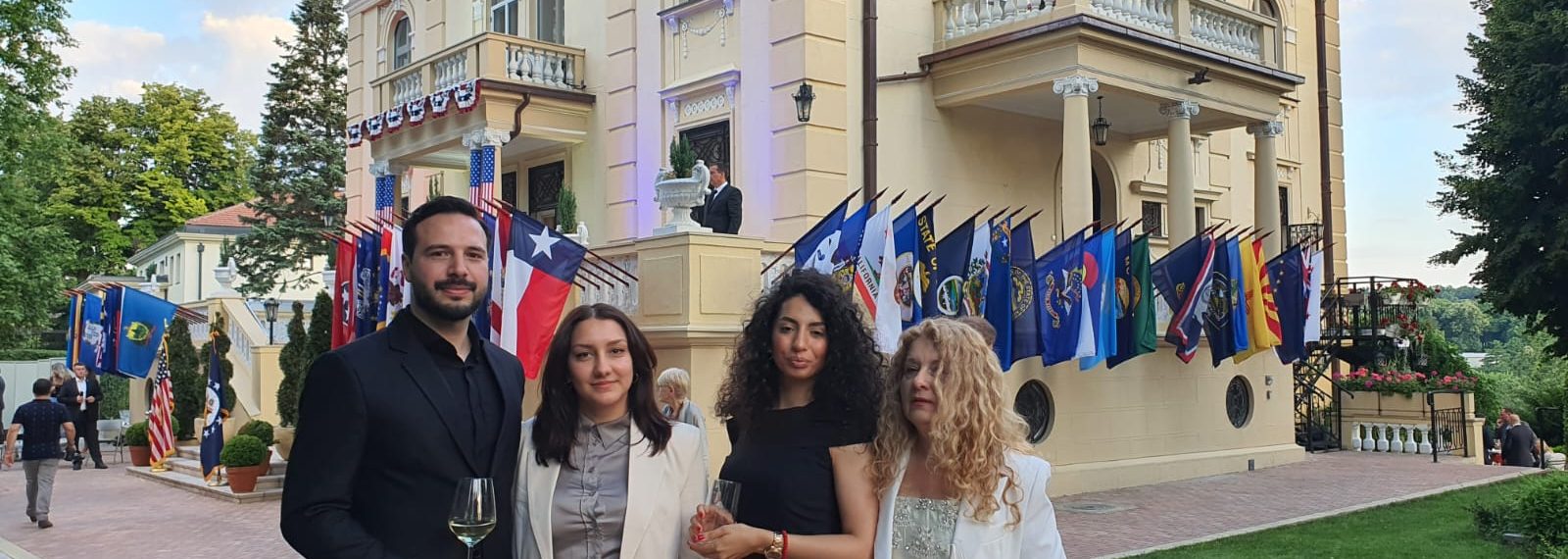
30.06.2023, Belgrade, USA Ambassador Residency
Hosted by:
Together with representatives from Opre Roma Serbia and REDI Serbia, we had the honor of attending the ceremonial marking of the Independence Day of the United States. 🇺🇸
The 247th anniversary of the signing of the Declaration of Independence was celebrated at the residence of His Excellency Christopher Hill, the U.S. Ambassador.
In addition to President Aleksandar Vučić and Prime Minister Ana Brnabić, the celebration was attended by many high-ranking officials, ministers, representatives of both the ruling and opposition parties, representatives of embassies from other countries, and representatives of international organizations, as well as members of the civil sector.
We would like to take this opportunity to thank the U.S. Embassy Belgrade for the invitation and look forward to continuing our successful collaboration.
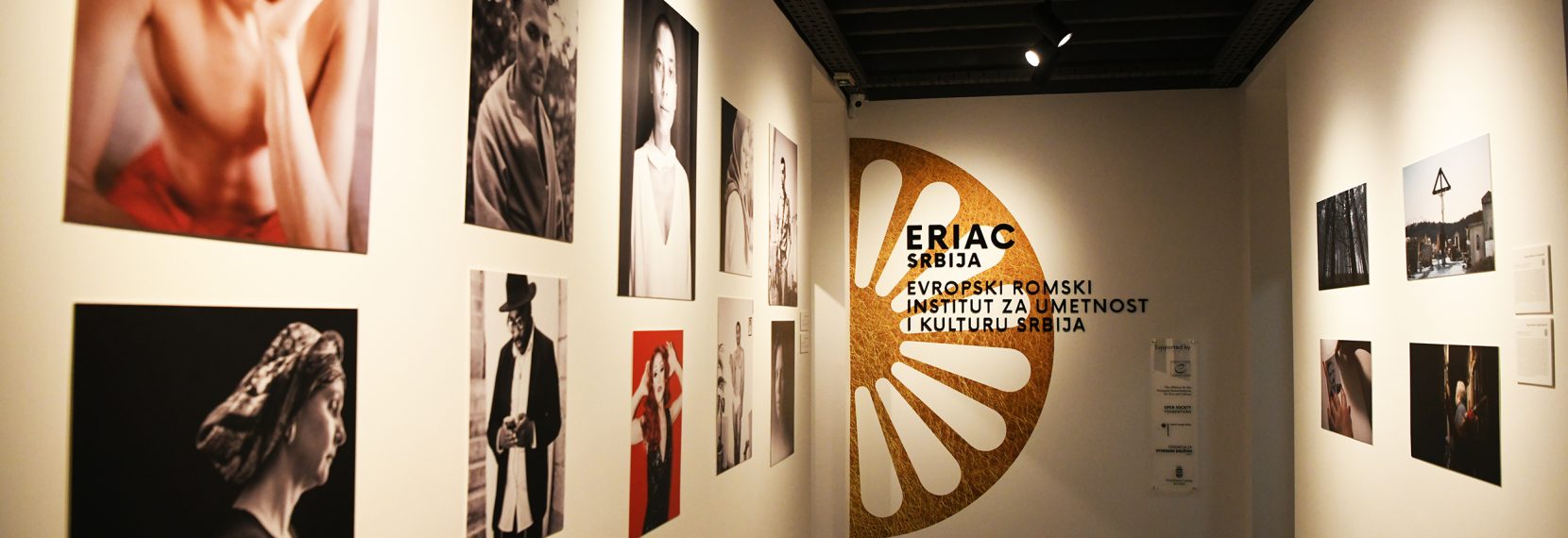
On view in the ERIAC Serbia gallery:
Location: Majke Jevrosime 51, Beograd, Serbia
Opening hours: Monday to Friday 10:00 – 17:00
Artists:
Małgorzata Mirga-Tas, Ľuboš Kotlár, Mara Oláh Omara, Vera Lacková, Zoran Tairović
Curated by Bratislav Mitrović
The same degree and intensity of generalization, reductionism, and stereotyping apply to imagining the Balkans and the Roma. Maria Todorova’s concept of Balkanism provides a sound theoretical framework to explore the deployment of Balkanist stereotypes against Roma in Eastern Europe and Western Balkans. As explained in her foundational text, Imagining the Balkans (1997): “By the beginning of the twentieth century, Europe had added to its repertoire of Schimpfwörter, or disparagements, a new one that, although recently coined, turned out to be more persistent over time than others with centuries-old tradition.”Both the Roma and the Balkans have been described as the “other” of Europe. It is in the field of the visual where epistemic and physical violence is the most obvious. Kotlár, Lacková, Mirga-Tas, Omara, and Tairović engage in intimate dialogue with the history of—frequently hurtful—representations of Roma. The participating artists do not care to conform to the standards of behaviour devised as normative by and for the “civilized world,” they choose artistic strategies which directly and consciously subvert the objectification, feminization, and sexualization of the Balkan and Roma identities. So, no wild nature, no savage locals, no guns, or other clichés. Instead of the gorges of the Balkans, we focus on here and now. Zoran Tairović’s Vašarište, Omara’s Mogyoród, the idyllic landscape by Mirga-Tas, and Vera Lacková’s depiction of Roma partisans during the Second World War present an updated picture of Roma, seen by Roma masters. Ľuboš Kotlár’s series case study: Jerusalem provides an ironic commentary on the Instagrammability of Otherness.
Belgrade, the gateway to the Other, is also a silent participant of this exhibition, pinpointing Serbia’s liminal position between “Europe” and the “Balkans” as a potentially ideal standpoint from which one might challenge the binary oppositions of Gypsyism and Balkanism and begin to reimagine the Roma and the Balkans, redirecting these categories as a site of political engagement and critique.
On the occasion of Roma Resistance Day, May 16th, we officially opened the exhibition “Gypsyism, Balkanism – through a dark glass“.
ERIAC Serbia Director, Jadranka Ivkovic, opened the program by talking about the importance of Roma Resistance Day, and the project V4 joins RomaMoMA. In front of the Ministry of Culture of Serbia, the exhibition was officially opened by the Special Adviser to the Minister of Culture, Alma Rizvanovic. Distinguished guests were guided through the exhibition by Bratislav Mitrovic, ERIAC Serbia Office Manager. The program was moderated by Silvija Nesic, an ERIAC member. The event was graced by the presence of the Ambassador of Germany in Serbia, Anka Konrad, as well as the Deputy Ambassador of the Czech Republic in Serbia, Josef Broza.
The opening of the exhibition was accompanied by a reading of Meti Kamberi’s poetry from his first collection of poems, “Disi dok te ima” performed by Slobodan Bestic, actor, Champion of the National Theater in Belgrade, professor of acting at the Faculty of Contemporary Arts. We closed the evening with a musical performance by Dragan Stankovic on the guitar and Bojan Vasic on the violin.
The opening is a part of the Khalili Foundation’s World Festival of Cultural Diversity.
V4 joins RomaMoMA project partners: Jaw Dikh, Europai Roma Kulturalis Alapitvany, Slov Media Group, Media Voice
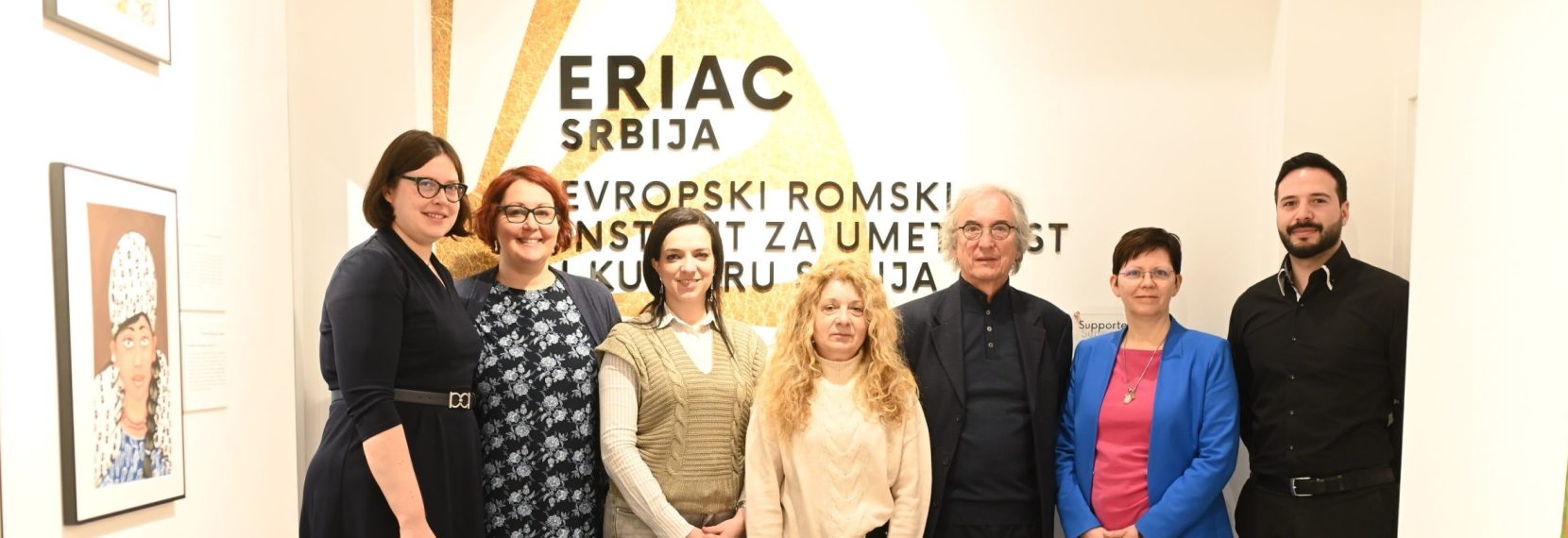
30.03.2023, Belgrade ERIAC Serbia, World Roma Day
Hosted by:
Representatives of the European Commission against Racism and Intolerance (ECRI) of the Council of Europe had the opportunity to visit ERIAC Serbia. They familiarized themselves with our work and the work of the BFPE Foundation for a Responsible Society, and also viewed the exhibition ‘All Birds Pray for Our Children’.

30.03.2023, Belgrade ERIAC Serbia, World Roma Day
Hosted by:
ERIAC marked International Roma Day on April 8th with a curated set of inspirational, interesting, and exciting Roma cultural events!
April 8, 1971, was a turning point for Roma communities worldwide. On this day, in London, the First World Romani Congress took place. This inaugural conference in the formation of a transnational, non-territorial cultural Roma nation asserted that the politically correct term ‘Roma’ describes all groups comprising the largest minority in Europe (10-12 million people). Participants concluded that it was essential to reclaim authorship over Roma culture, leading to the launch of an international movement for the cultural recognition and inclusion of Roma.
INITIATIVE FOR INCLUDING ROMA HISTORY AND CULTURE IN SCHOOL PROGRAMS AND EDUCATIONAL MATERIALS IN SERBIA
Ahead of International Roma Day, at the ERIAC Serbia premises, in collaboration with the Council of Europe Office in Belgrade, the Roma and Travelers Team, and the Roma Education Foundation, we organized a discussion on the Initiative to introduce Roma history and culture into mandatory school programs in Serbia.
Representatives from the embassies of 15 countries, UN representatives in Serbia, EU delegations, OSCE mission in Serbia, Council of Europe, and ZOUV attended the discussion.
PROGRAM
15h00 – Opening
15h10 – Briefing on Inclusion of Roma and Travellers history in school curricula
15h45 – Questions and Answers
16h00 – Guided tour of the exhibition and cocktail
As part of the online campaign PROUD ROMA, PROUD COMMUNITY, we presented a series of posts about Roma individuals who have marked the history and culture of Roma in the Balkans.
PROUD ROMA, PROUD COMMUNITY – SLOBODAN BERBERSKI
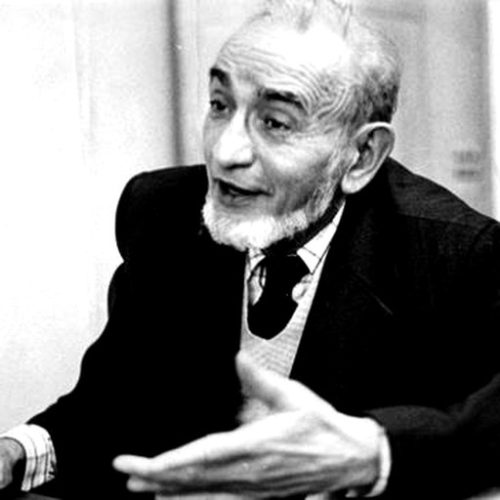 Slobodan Berberski (1919-1989) was a pioneer in the Roma movement and Roma poetry in the former Yugoslavia. Arrested in 1941 as a member of the Communist Youth League of Yugoslavia, he joined the People’s Liberation Struggle of the Yugoslav people.
Slobodan Berberski (1919-1989) was a pioneer in the Roma movement and Roma poetry in the former Yugoslavia. Arrested in 1941 as a member of the Communist Youth League of Yugoslavia, he joined the People’s Liberation Struggle of the Yugoslav people.
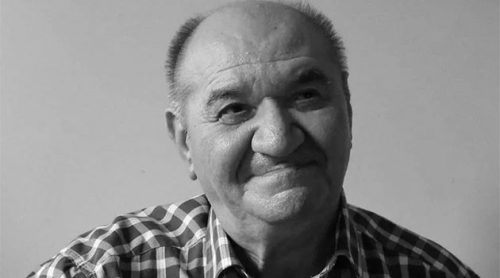
After completing high school, Rajko Djuric studied philosophy, physical chemistry, and theology at the University of Belgrade, where he graduated from the Faculty of Philosophy in 1971 and obtained his doctorate in sociology in 1985.
From 1972 to 1991, he worked as a journalist for the Belgrade daily newspaper Politika, where he served as the editor of the cultural section, among other roles. From 1991 to 2004, he worked in Berlin, and from 2004 to 2006, he was the assistant editor-in-chief of Tanjug (Telegraph Agency of the New Yugoslavia; National News Agency). He also served as a member of the National Assembly in 2007. Rajko Đurić taught at the Free University of Berlin and at INALCO University in Paris.
He distinguished himself as a writer, publishing numerous literary works on the history of the suffering of Roma during World War II, such as the poem “I Am Jadvasem.” He also wrote the history of Roma literature and published works on Roma tradition and culture, including “Romske zagonetke = Romane garadine alava” (Roma Riddles; Belgrade: Serbian Academy of Sciences and Arts, 1980) and “Zagonetke, mitovi i verovanja Roma” (Riddles, Myths, and Beliefs of the Roma; Roma Migrations – Circles of Hell and Wreath of Happiness; Belgrade: BIGZ, 1986).
Among his scholarly works, the “History of the Roma,” “History of Roma Literature,” and “History of the Roma Holocaust” hold a special place. He wrote the Grammar of the Romani Language and a study titled “Roma Verbs, Their Origin and Meaning,” the first research work of its kind in the world.”
Esma Redzepova was one of the most significant singers and artists in the Balkans. She was often described as a symbol of the struggle for Roma rights and an icon of multiculturalism.
Born in Skopje, Esma was fascinated by the sounds of traditional Roma music from an early age. Her voice resonated in town squares and theaters across the Balkans. With over 500 songs and 20 albums, Esma not only won the hearts of her audience but also left a profound mark in the musical history of the Balkans.
Her performances were known for their energy, passion, and powerful interpretation of songs that often spoke of pain, suffering, and love. Esma was an artist who sang from the heart and succeeded in creating music that conveyed important messages.
In addition to her musical career, she was also an activist who fought for the rights of the Roma and for multiculturalism. She was a woman who lived her art but was simultaneously a fighter for equality and justice. Her message remains important today as we continue to face issues of discrimination and intolerance.
Today, we remember Esma Redžepova, her influence on music, and her impact on society as a whole. Her music and messages will forever be a reminder that art is powerful, it can change the world, and it’s important to fight for the rights of all people.
Saban Bajramovic is one of the greatest legends of Roma music in the Balkans.
Born on April 16, 1936, in Niš, Saban Bajramovic began his musical career as a teenager, performing in various clubs in and around Nis. As an authentic representative of Roma culture, Saban successfully blended different musical influences, creating a unique sound that marked the music of the Balkans.
Throughout his career, Saban recorded over 20 albums and released more than 300 songs, becoming one of the greatest and most influential singers in the Balkans. His voice, resonating with strength and emotion, was recognizable beyond the Balkan borders. Saban Bajramovic was much more than just a musician. He was a man who, through his art, spoke of human suffering, as well as hope and love. He was a champion for Roma rights and always stood up for those marginalized in society.
Saban passed away on June 8, 2008, in Nis, but his influence on music and culture as a whole remains significant today. His music continues to inspire many, and his message of equality and justice reminds us that we should stand in solidarity and fight against all forms of discrimination. May Saban’s music and messages be a reminder that art is powerful, it can change the world, and it is important to fight for the rights of all people.
Bajram Haliti was one of the most respected authorities on the history and culture of the Roma. He published poems and articles in numerous magazines and was featured in anthologies of Roma poetry in Indian, Italian, Polish, Bulgarian, and English languages.
He authored two plays, “Roma in the Hell of Jasenovac” and “The Untouchables Do Not Die – Roma Children of God.” His work was included in the PEN anthology of Roma writers in 1998, titled “The Roads of the Roma.”
In 2011, he published the first Serbian-Romani dictionary, considered the world’s first Romani dictionary, encompassing around 50,000 words and expressions. The dictionary provided a common foundation for developing curricula, guidelines for educational programs, textbooks, and other teaching materials, as well as exams in the Serbian school system. The book aimed to assist those dealing with or planning to deal with the Romani language. Following this, he published other dictionaries.
During his time in Kosovo, he worked as a journalist at RTV Priština. He also served as the provincial secretary for information of Kosovo and Metohija. In Gnjilane in 1995, he initiated the informative-political newspaper in Serbian and Romani, Ahimsa (Nonviolence), dedicated to Roma and Serbian topics.
At the 7th World Roma Congress in Zagreb in 2008, he was elected as the Secretary General of the International Roma Union.
Bajram Haliti left an indelible mark on the Roma community. His work and writings continue to inspire many. Bajram remains a symbol of the struggle for Roma rights and the promotion of Roma culture worldwide.

23.03.2023, Belgrade, ERIAC Serbia
Hosted by:
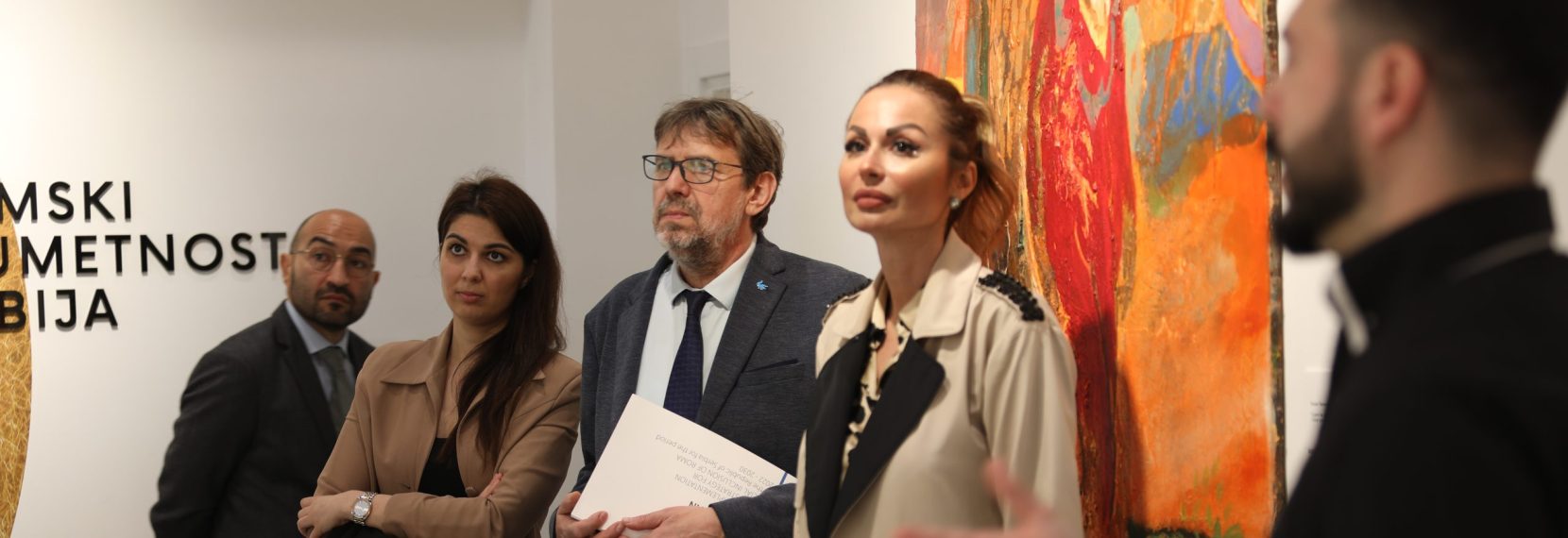
22.03.2023, Belgrade ERIAC Serbia
Hosted by:
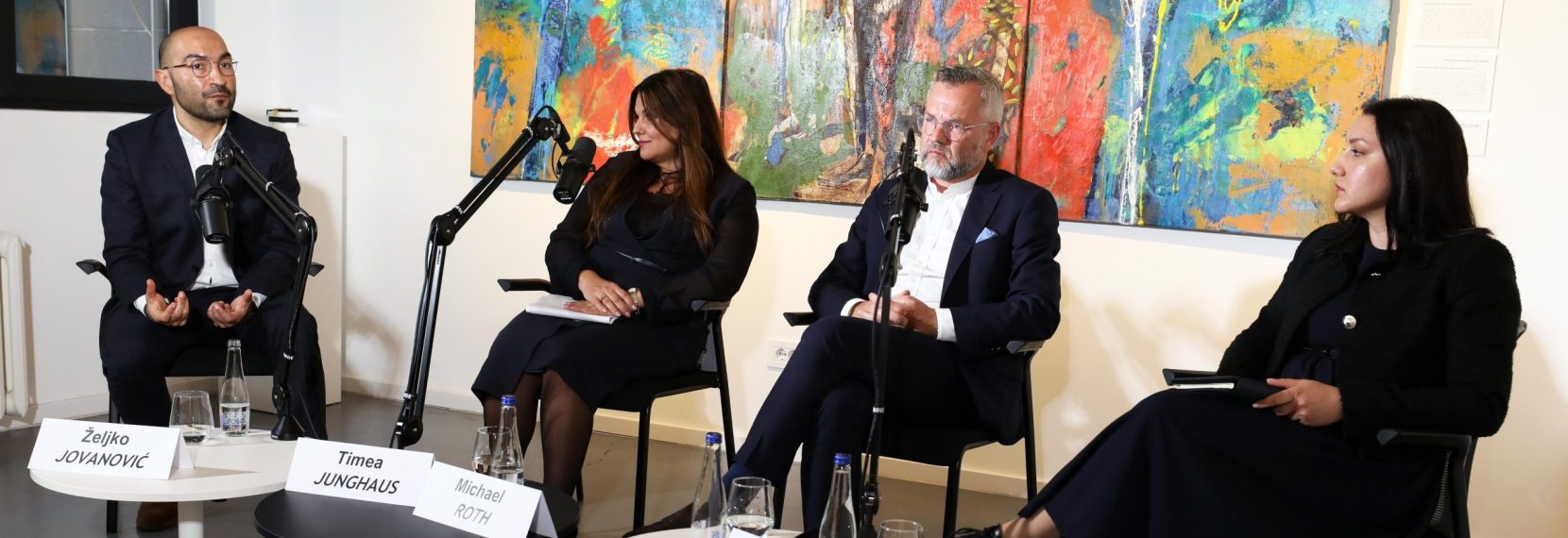
21.03.2023, Belgrade ERIAC Serbia
Hosted by:
❓ What has gone wrong at the intersection of culture and politics in Europe?
❓ Is “soft power” important in today’s foreign policy?
❓ What are the realistic expectations for organized Roma voices such as ERIAC and Opre Roma in supporting European values in times of challenging “realpolitik”?
Moderated by:
Zeljko Jovanovic
Director of the Office for Roma Integration, Open Society Foundation
Panelists:
Michael Roth
Chairman of the Foreign Affairs Committee of the German Bundestag
Timea Junghaus
Executive Director of ERIAC
Jelena Reljic
Leader of the grassroots team, Opre Roma Serbia
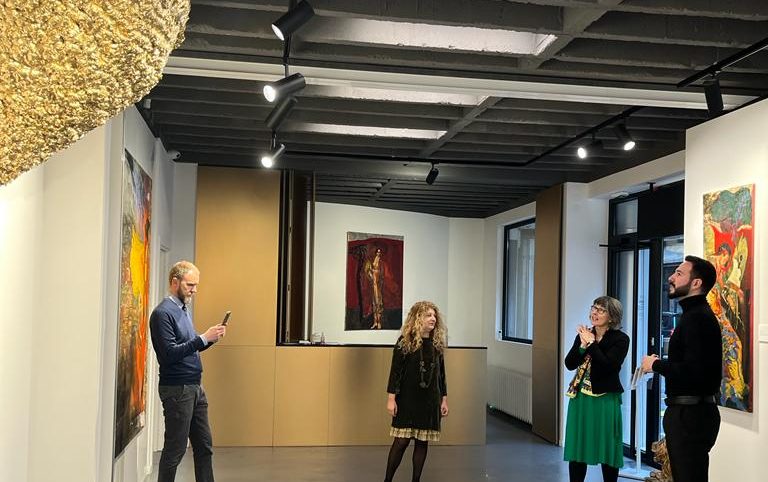
10.02.2023, Belgrade ERIAC Serbia
Hosted by:
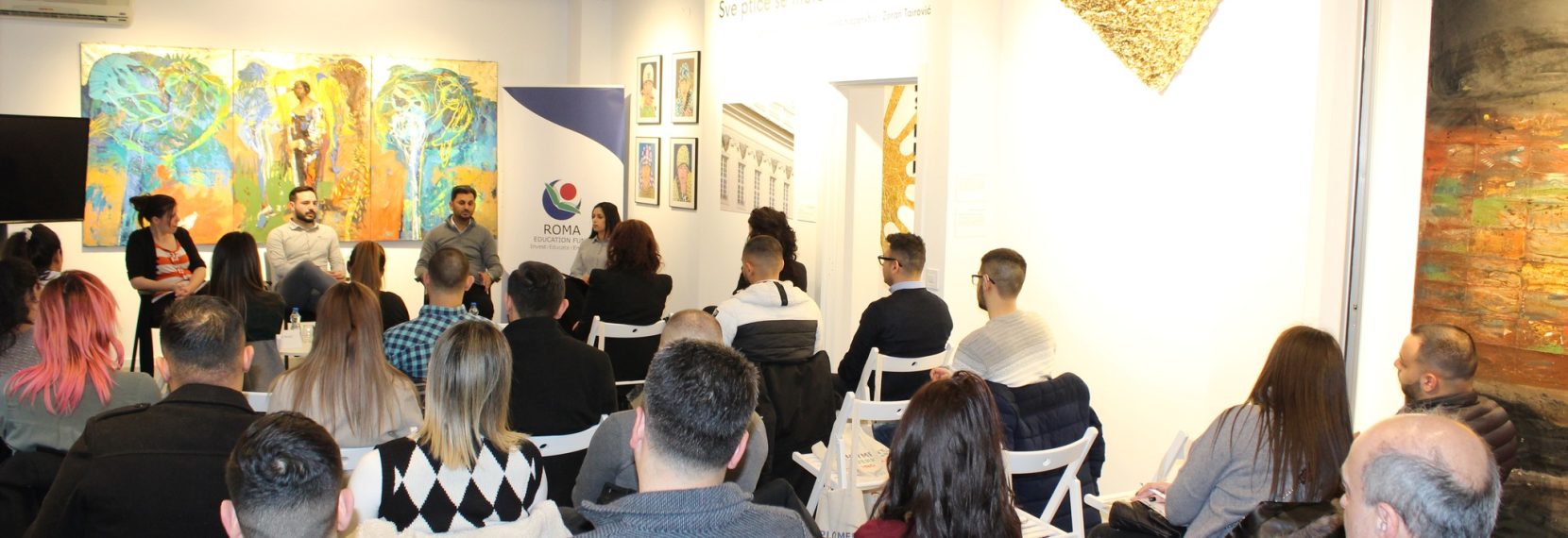
10.02.2023, Belgrade ERIAC Serbia
Hosted by:
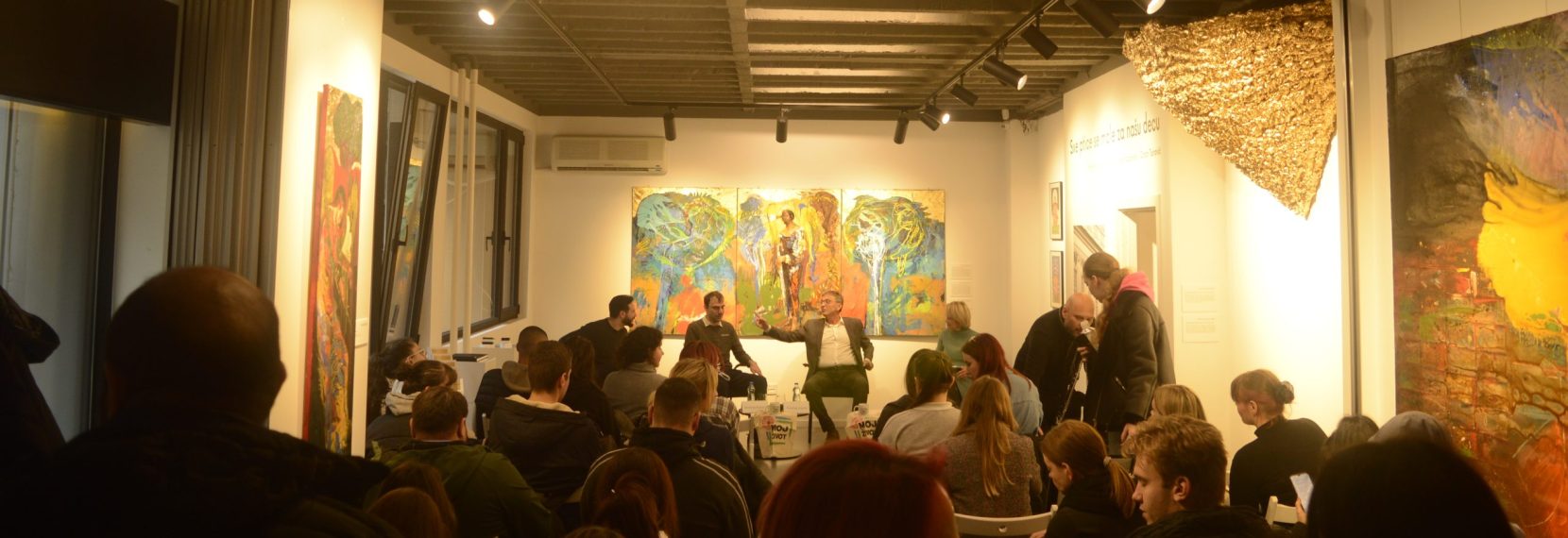
26.11.2022, Belgrade ERIAC Serbia
Hosted by:
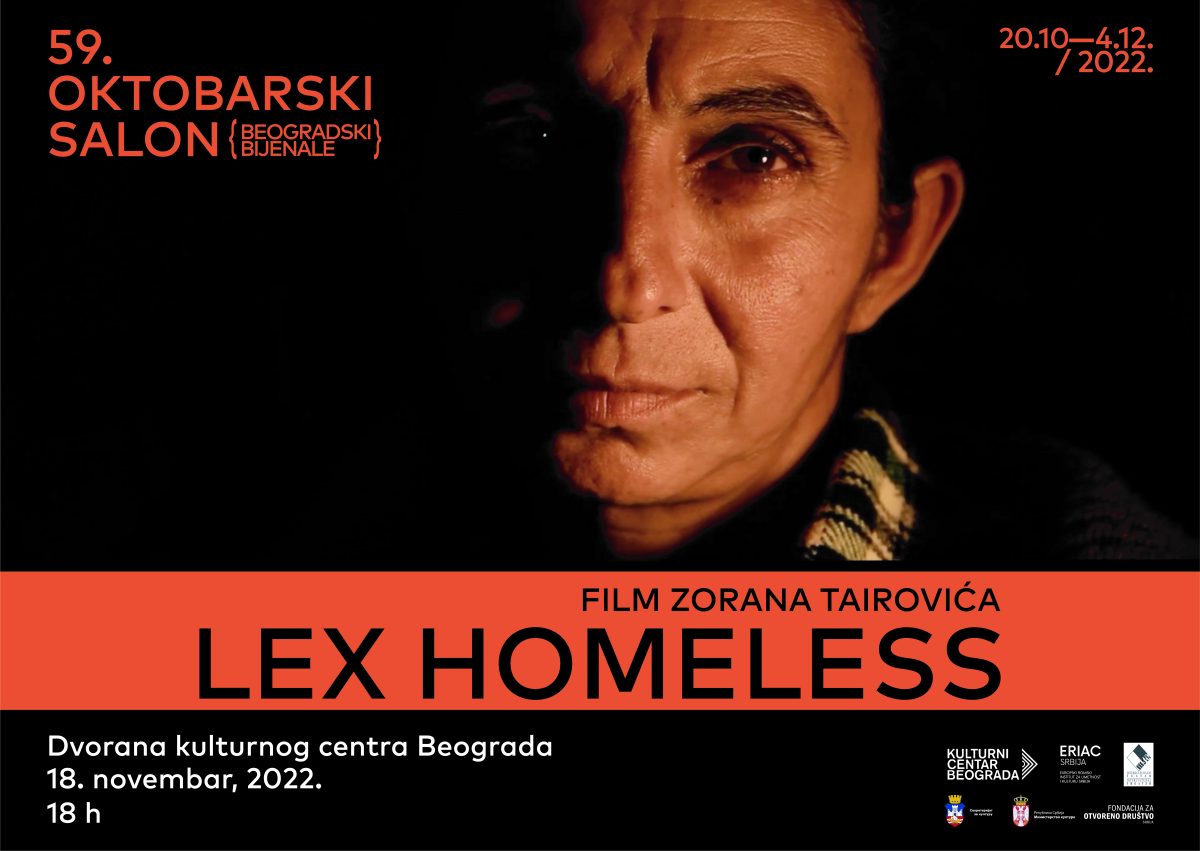
04.11.2022, Belgrade ERIAC Serbia, International Romani Language Day
Creative documentary, 2020, 73 min
Cast: Katica, Zoran, and Zlatko Đurđević
Production: Intercultural Theater III/40 AR Cinema
As part of the 59th October Salon, we draw attention to the cinematic works of Zoran Tairović, focusing on the themes of homelessness and the homeless, whose numbers have been increasing for years, yet this important topic remains undefined in the legislative framework.
Following the screening of “Lex Homeless” in the cinema hall, there was a discussion with Zoran Tairovic, the film’s director, a multimedia artist, and the director of the Short Meter Festival with a “Roma theme” – FROM. The discussion was led by Ivan Velisavljevic, program editor at the DKSG archive, and a film and literary critic.
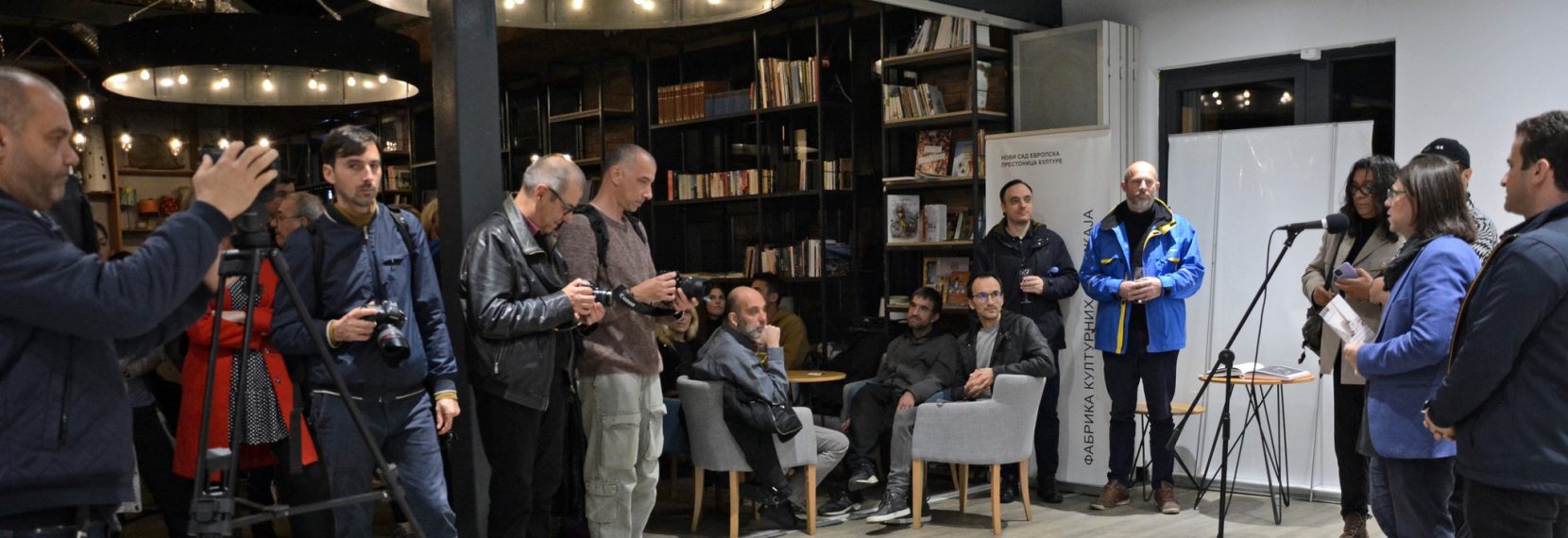
17.11.2022, Novi Sad, Svilara, Exhibition opening
Photo credits: Snezana Lerh, Marko Pudic and Vladan Jeremic
Hosted by:
In Novi Sad, as part of Novi Sad – European Capital of Culture 2022, the exhibition “On the Other Side of the Image” was officially opened, in which Roma artists Zoran Tairovic, Delaine Le Bas, Sead Kazankhiu and Nihad Nino Pusija exhibited their works.
The exhibition On the other side of the paintings of contemporary artists Zoran Tairović (Serbia), Sead Kazanxhiu (Albania), Nihad Nina Pušija (Germany / Bosnia and Herzegovina) and artist Delaine Le Bas (Great Britain) at the Svilara Cultural Station and the Serbian National Theater in Novi Sad focuses to the research space “behind the picture”, with the aspiration to show concepts and creative processes from the inside, from the artistic practice and visual language of these creators, whose works are connected by decolonization and critical approach to the institution of art.
The space “On the other side of the image”, which is created before the artist’s work appears, often remains hidden. That is why this exhibition focuses on that area, in the works of significant representatives of the progressive Roma culture and the contemporary artistic sphere. Behind the displayed artifacts are decades of work and commitment to a research approach that emerged from their own communities and cognitive spheres, in which and with which the artists live and work. In support of this, the space “behind the picture” implies, as Zoran Tairović writes in the accompanying catalog, in his almost manifest statement Activated signal behind the picture, a reaction to two key words: the first is invisibility, and the second is suffering.
Photo credits: Snezana Lerh, Marko Pudic and Vladan Jeremic
A press conference was held before the opening of the exhibition “From the other side of the picture”. The guests had the opportunity to hear more about the exhibition from the curator of the exhibition, Vladan Jeremic, as well as the personal motives of the participation of the artist Delaine Le Bas.
09.11.2022. Delain Le Bas, Vladan Jeremic and Jadranka Ivkovic
ERIAC Serbia Gallery

04.11.2022, Belgrade ERIAC Serbia, International Romani Language Day
Hosted by:
ERIAC Serbia marked International Romani Language Day with a panel discussion that presented the best practices of the most successful schools which paved the path for further institutional achievements in preserving Roma identity and realizing the right to practice Romani language in formal education in all schools in Serbia.
The sustainability and development of the language are fundamental (collective) rights of minorities. Therefore, it is necessary to establish and manage an institutional and educational framework to enable this to be achieved. Therefore, mentioned frameworks can play a decisive role in the choice of curriculum and language of teaching, as well as in ensuring that minorities lead and manage the areas of community, education, culture, religion, social issues and dissemination of information. All of the above can be successful only through socio-political change, which re-examines the established philosophy of the nation-state, and calls into question the close relationship between trends and dominant language groups, by the political engagement of the linguistic community of the minority culture on the one hand and critics on the other. Language theorist James Tollefson explains that the composition of dominant cultures can be changed by the linguistic actions of a minority community (Tollefson 1991: 202). Education is not a space of neutral, independent and objective learning; on the contrary, it must be seen as one of the main psycho-social sites of struggle to break sociocultural inequalities. Education is a cult arena for presenting transformative politics.
Language is the basis of the identity of every nation, and, in the case of the Roma community, the preservation of the Roma language is also a barrier to assimilation into the majority society. For this reason, Roma language and history experts have made great efforts in previous decades to ensure that the Roma language with elements of national culture finds its place in education. Regardless of the fact that Serbia has a long-standing tradition of education in minority languages, there are still no conditions for teaching in schools to be completely conducted in the Romani language. The Romani language with elements of national culture was introduced as an elective subject in Vojvodina in 1998, and on the territory of the whole of Serbia in 2015.
Romani language and elements of Roma culture is an elective subject in primary schools, but it is organized only in a small portion of schools, therefore not all Roma students have the possibility to attend it. The latest data from the 2019/20 school year show that 68 schools organized Romani language classes with elements of national culture attended by 2.553 students. The number of students enrolled in the class increases on an annual basis, although the number of schools implementing it does not show such a trend.
Systemic Romani language as an elective subject is institutionalized and is part of the regular care of the education system. However, there is still a long way to go before every Romani child who wants can speak and study their mother tongue language, history and culture in school. Only then we can be sure that the school system is inclusive, which it aspires to be. That’s why ERIAC Serbia, in cooperation with the Fund for Roma Education, is organizing a panel discussion on the topic of the Roma language as the basis of identity and barriers to assimilation on the occasion of World Romani Language Day.
At the panel, we addressed the following questions:
Our panelists:
– Djurdjica Ergic, adviser for the education of members of sensitive social groups in the Ministry of Education of the Republic of Serbia
– Ljuan Koka, expert in Romani language and history
– Svetlana Kocic, principal of Elementary School “8. Oktobar”
– Eldena Stanic, teacher of the optional subject Romani language with elements of national culture
The panel discussion was followed by a recital of poems in the Romani and Serbian languages in the performance of Aleksandra Milojkovic and Silvija Nesic accompanied by music from Dragan Stankovic.
PROGRAM
16:00 – 16:05
Poetry
“Amari Chib”
Reading: Aleksandra Milojkovic and Silvija Nesic
Guitar: Dragan Stankovic
16:06 – 16:10
Welcome
Jadranka Ivkovic – ERIAC Serbia Director
17:40 – 18:10
Panel discussion The Romani Language as the Basis of Identity and a Barrier to Assimilation
Djurdjica Ergic – Adviser for the education of members of sensitive social groups in the Ministry of Education of the Republic of Serbia
Ljuan Koka – Expert in Romani Language and History
Svetlana Kocic – Principal of Elementary School “8. Oktobar”
Eldena Stanic – Teacher of the optional subject Romani language with elements of national culture
Moderator: Silvija Nesic
17:20 – 17:30
Poetry
Reading: Aleksandra Milojkovic and Silvija Nesic
Guitar: Dragan Stankovic
17:30 – 18:00
Reception

09.08.2022. Kotor, Montenegro, ERIAC Serbia at KotorArt festival
KotorArt International Festival, officially proclaimed by the Government of Montenegro as a Festival of national importance, annually brings together numerous international artists and tens of thousands of visitors, who enjoy over 350 programs at various venues in Kotor and Boka Bay. With over twenty years of experience in establishing and realizing the highest quality art programs, often linked with socio-political issues and topics relevant to the local community, KotorArt has developed into one of the leading art festivals in Southeast Europe. The Festival enjoys the patronage of UNESCO, as well as the Municipality of Kotor and the Ministry of Culture of Montenegro; it is supported by the European Union, numerous foreign embassies, international foundations, donors, and corporate sponsors.
Project Modifying Error 404: towards green, digital and inclusive societies aims to raise awareness on three important pillars of contemporary societies – digital and minority rights and the green agenda in the Western Balkans. Referring to the computer network communications error through its title, the proposed action underlines insufficiently developed mechanisms and practices and addresses the lack of knowledge and understanding of the importance of the abovementioned pillars in building more democratic and inclusive societies.
Since its establishment in 2017, the European Roma Institute for Arts and Culture has spearheaded an unprecedented effort to support Roma artists and find untapped talent within the Roma community and has become an international creative hub to support the exchange of creative ideas across borders, cultural domains, and Romani identities. Our mandate covers a broad spectrum of activities, from acting as a Commissioner of the Roma Exhibition at the International Exhibition of Art Biennale di Venezia to publishing Romanes language books. The common denominator is that all activities stem from the belief that culture is the most
powerful tool to shift negative social narratives. During a time when chauvinism and anti-Roma prejudice is on the rise — and when state funding is increasingly denied to projects that don’t toe the nationalist line — it is crucial that minority arts and culture have a place of their own.
After five years of consistent programming, ERIAC’s presence at the 59th International Art Exhibition La Biennale di Venezia, 23rd International Art Exhibition Triennale Milano, Manifesta 14, and documenta fifteen in 2022, marks another great step forward for contemporary Roma art and shows that art by Roma people is breaking through the barriers that have been in place for far too long. Our presence at these highly regarded events is a fitting milestone in our trajectory, but also an exciting development in the universal history of mainstream exhibitions and institutions, traditionally excluding Roma. While participation in these elitist events might
seem remote from the situation for Roma on the ground, it is also where governmental policy can be influenced, and international perceptions persuaded toward alternative points of view. To mark our fifth anniversary and to celebrate our first programmatic contribution to the International Festival KotorArt, we created a programme of conversations with trailblazing cultural activists and artists from the region, who have supported ERIAC from its inception.
The invitees, distinguished artists and cultural promoters from Albania, Northern Macedonia, Romania, and Serbia, engaged in the conversation about the power of art to change social attitudes and contribute to a more healthy and equitable society. Using their expertise and experience from across the artistic disciplines, including visual and performative arts, the speakers will discuss the role of artists and cultural institutions in promoting Roma cultural heritage, starting from adjusting the majoritarian school curricula to interrogating harmful and stereotypical depictions of Roma in the mainstream culture.

Sead Kazanxhiu is one of the most engaged protagonists of the contemporary Albanian art scene. His artworks are dedicated to the culture, problems, and status of the Roma community from which he originates. Sead’s activist and artistic practice are in symbiosis with the broader struggle for the awareness of the significance of Romani culture, as well as against systemic violence and anti-Roma stereotypes. This involves working on the education of majority populations to resist racist, classist, and anti-Romani prejudices that are still being perpetuated within the European societies of today. He currently participates in the exhibition One Day We Shall Celebrate Again: RomaMoMA at documenta fifteen in Kassel, and in All the Birds are Praying for Our Children in Belgrade within ERIAC’s contribution to Manifesta 14.

Alina Șerban is an actress, playwright, and director. For the past 13 years, Alina has been using film and theatre against all forms of discrimination to create and claim space for marginalized stories, support gender equality, combat violence against women, and promote minority rights. Her career has wide visibility in the international press, including Agency France Press, Variety, Le Monde, Le Figaro, Screen Daily, and Cine Europa. Alina is a graduate of the Royal Academy of Dramatic Art-London, New York University – Tisch, and the National University of Theatre and Film of Romania. In 2020, she was awarded the Tajsa Roma Cultural Heritage Prize for the promotion of Roma culture by ERIAC.

Zoran Tairović, born in Novi Sad, Serbia, is an academic painter and a multimedia artist with a doctoral degree in interdisciplinary studies in applied arts management, an activist, and Director of the Intercultural Theatre. Winner of prestigious world awards for painting, author of the first Roma opera and musical, and many award-winning documentaries. He has participated in his artistic performances at many important festivals and events in Serbia and around the world. Zoran’s achievements are wide-ranging and tireless, including published literary works, music compositions, art exhibitions, works in public spaces, lectures, curatorial work, videos, and films. Professionally, Zoran has excelled in several spheres, with positions as the founder of the Albert Hall Museum for Conceptual Art in Bódvalenke, Hungary, as a Member of the Presidency, as founder and director of, a film festival with Roma thematic, FROM. President of the Committee for Culture of the League of Roma.
MUSICAL PERFOMARS:

The Pillers is an internationally renowned violin and accordion formation of the Austrian-Serbian Roma musicians Darko and Danijel Piller. Danijel studied at the Prayner Conservatory in Vienna. Darko studied at the Richard Wagner Conservatory and is currently considered the youngest professor in Vienna. In 2017, they won the prestigious world music award ‘Onet le Châteaugot’ in France.

Ferenc Snétberger is a Hungarian jazz guitarist born in a Roma family. He studied at Bela Bartók Jazz Conservatory in Budapest. He plays in orchestras founded by him, but also with famous international jazz music stars. Today, he is best known for his art of improvising and his crossing of stylistic borders. His music is inspired by the Roma tradition of his home country, Brazilian music and flamenco as well as classical guitar playing and jazz. He has composed film music and “For My People” for guitar and orchestra. The German Holocaust Remembrance Day concluded the Snétberger celebration in plenary by the German Bundestag. He made numerous albums as a leader, co-leader and sideman and has toured all over Europe as well as Japan, Korea, India and the United States. He received several prestige acknowledgements such as the Hungarian Order of Merit, Franz Liszt award and the Kossuth Prize. He founded the Snétberger Music Talent Center, an international music school for disadvantaged children and young people, mainly minorities of Sinti and Roma origin.
no images were found
Kal Band, formed in 1996 in Valjevo, creates an eclectic sound created by the symbiosis of various musical genres, such as the music of the Western Balkans, swing, jazz, blues, and pop. In the combination of the Balkan style and the Romani rhythm, the original aesthetic of the Minor stands out, which Western music critics named Rock’N’Roma and Gypsy Rockabilly. The band, whose name derives from the Romani language and means black, has been through its music actively representing the culture of the Romani people, both in the country and abroad. The band has performed at international festivals such as Roskilde Festival in Denmark, Fusion Festival and Berlinale Festival in Germany, Exit Festival, Belgrade Beer Festival, Film and Music Festival Kustendorf and Jazz Festival Nišvil in Serbia, Sziget Festival in Hungary, La Notte di San Lorenzo in Italy. In addition to the colossal European tours, Kal in its many years of history includes two intercontinental, American tours, in 2006 and 2008, when they performed with Richard Thompson and Leonard Cohen on the iconic stage of Joe’s Pub in New York. It is the American tour that is responsible for the collaboration with one of New York’s most famous musical attractions – Gogol Bordello.
no images were found
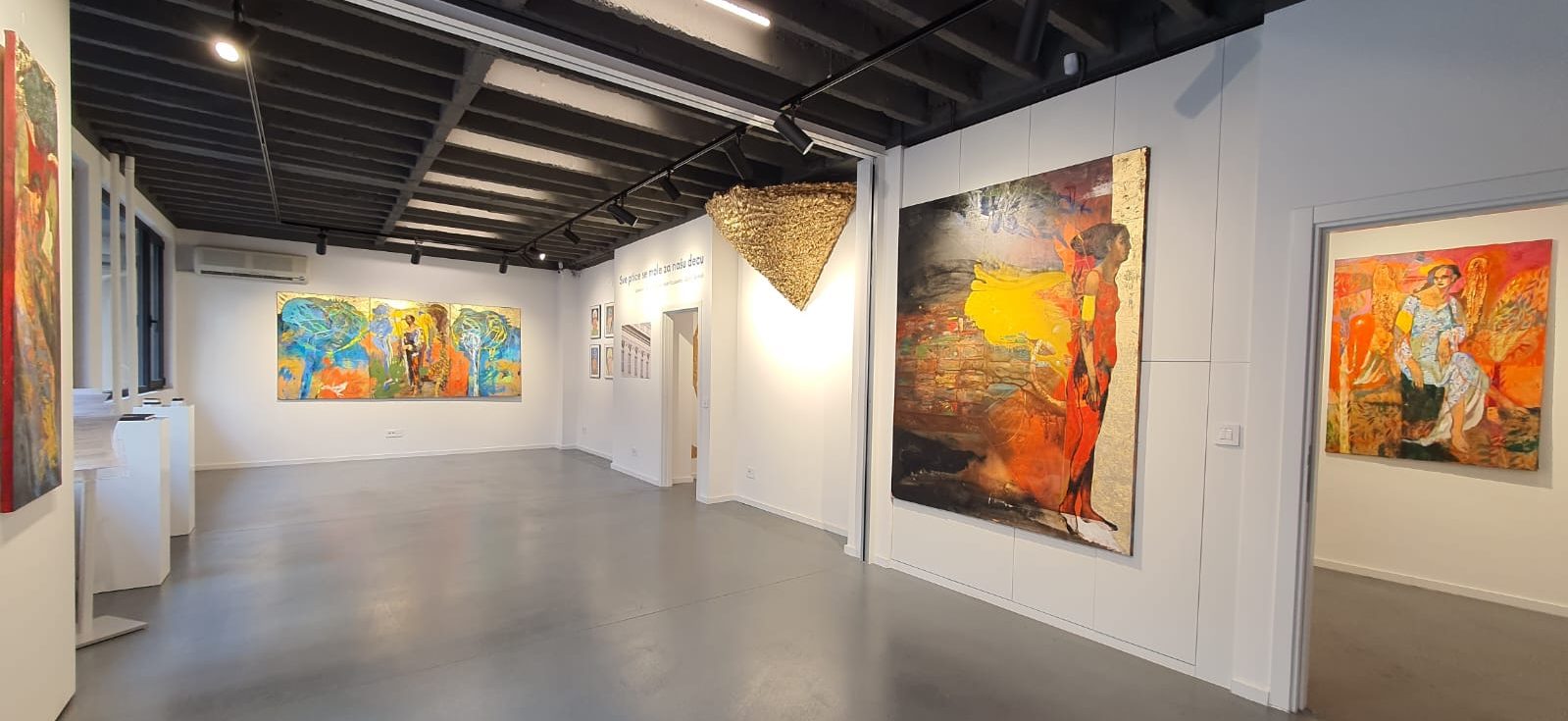
On view in the ERIAC Serbia gallery:
Location: Majke Jevrosime 51, Beograd, Serbia
Opening hours: Monday to Friday 10:00 – 17:00
Artists:
Farija Mehmeti, Sead Kazanxhiu, Zoran Tairović
We are here. We are everywhere. Europe would want to contain us, to control us, to destroy us. And still, we survive. We survive. In multiple acts of resistance, we care for our children and our elders; we care for each other; we hold onto our love and our family. We are still here. The long history of Romani people in Europe is at once the Longue-durée of world history. As Europe collected its Others through violence and genocide, as it girded its loins and militarized its borders, still we survived. Through eviction. Through enslavement. Through expulsion, and deportation. Through imprisonment. Through expropriation and appropriation. Through genocide. Still, we survived. Our survival is our resistance; it is the hope of the future and the story of the past. It is constant, and it is our constant, our touchstone, our living proof.
Ethel Brooks, RomaMoMA Manifesto 2022
The question of the possibility of the continued existence and functioning of art after the experience of the Holocaust is one of the key themes in both arts historical and philosophical thought. Within the artistic/creative practice of Roma artists – both those born after and before the war, survivors of the Holocaust and its witnesses – several directions have appeared, indicating both the presence of the trauma of the Holocaust and the impossibility of rendering it through the means used thus far. There is no clear precedence of any one mode of depiction, and different generations of artists and viewers advocate a range of tendencies.
ERIAC Serbia joins the #RomaRemember action to commemorate all Roma victims of the Holocaust, on Roma Holocaust Memorial Day with the exhibition celebrating Romani people’s resistance, resilience and healing – interwoven in the artworks of Sead Kazanxhiu, Farija Mehmeti, and Zoran Tairović.
Within the mainstream culture, the history of Romani suffering is overshadowed by a socio-political anti-Gypsy consensus enabling continuous and systematic discrimination of Roma. The exhibition interrogates the potential of re-writing of the testimony of trauma, pain, the haunting unassimilable experience of loss, dislocation, and silence, into a liberating discourse of healing and hope.
Sead Kazanxhiu’s giant Nest (2012-2022)- evocative of swallows’ nests- reminds us that despite the changing regimes and shifting hierarchies, what we perceive as ‘marginal’ has always been there, has always built its own homes and shelters, proposing new ways of belonging and enacting change. Roma have always nurtured their own alternative knowledge and ways of being together, and we can still learn from these practices today.
Farija Mehmeti’s series Roma Women (2012-ongoing) displays a multifaceted mosaic of imaginary characters to contemplate and honour the everyday heroism in and struggle for the existence of ordinary Roma women. These portraits are vehicles to remember and unearth suppressed Roma forms of knowledge on strategies for reproductive health or the preservation of mental health and healing practices in general as well as Roma wisdom on nature and the cosmos. In memory and embodied experience of these pasts, the portraits also serve as a reminder for the elders in the community that hold and pass on this knowledge.
Zoran Tairović’s ouvre accuses the industrialial modernity’s worship of rationality for marginalizing Romani people along with other alternate forms of knowledge such as the imagination and the unconscious. Tairović aims at exposing the strategic erasure of Romani Holocaust from the collective memory of genocides that happened in Europe in the 20th century.
The three artists use their individual visual vocabulary to enable a look through time in honouring the past and offering ways of continuing to imagine the interdependencies and inseparability of existence in the community while offering doors to making new more livable futures. While art cannot save our people from the ravages of daily living or historical contingency, it can summon us forth and connect us back to ourselves as a living force.
BIOGRAPHIES
Farija Mehmeti was born in Pristina in 1978 in the village of Alpin. She started painting in 2001 after she got inspiration from her brother, Bajram, who painted scenes from Roma life. He paints portraits of Roma women, mostly from his imagination, showing their colourful way of dressing, in order to preserve this tradition and culture of the Roma. The first exhibition at which she exhibited was in 2011, together with her brother Bajram, at the Oda Theater as part of the Roma Festival. The second exhibition, the first independent one, was in Pristina in September 2011, organized by SURF. The third exhibition was in April 2012 together with Bajram at the National Art Gallery, on the occasion of International Roma Day, April 8.
Sead Kazanxhiu is a visual artist from Baltëz-Fier in Albania, currently living and working in Tirana. He works across various mediums, including painting, installations, video, and performance. Kazanxhiu’s work as an artist, and as a cultural producer more generally, reflects his position as an Albanian Roma citizen. Profoundly aware of the ways that social and political hierarchies within the nation-state reinforce unequal privileges and prevent participation, Kazanxhiu’s practice foregrounds and addresses issues of politics, activism, prejudice, exclusion, and the environment. His image-making represents the efforts of a single artist devoted to restoring the dignity of a cultural group that has been forcefully and unjustly marginalized within the structures of European democracy.
Zoran Tairović, born in Novi Sad, Serbia, is an academic painter and a multimedia artist with a doctoral degree in interdisciplinary studies in applied arts management, an activist and Director of the Intercultural Theatre. Winner of prestigious world awards for painting, author of the first Roma opera and musical, and also many award-winning documentaries. He has participated in his artistic performances in many important festivals and events in Serbia and around the world. Zoran’s achievements are wide-ranging and tireless, including published literary works, music compositions, art exhibitions, works in public spaces, lectures, curatorial work, videos and films. Professionally, Zoran has excelled in several spheres, with positions as the founder of the Albert Hall Museum for Conceptual Art in Bódvalenke, Hungary, as a Member of the Presidency, as founder and director of, a film festival with Roma thematic, FROM. President of the Committee for Culture of the League of Roma, and an ex-adviser to the Vice President of the Government of the Republic of Serbia for Roma issues.
The exhibition is organized within the framework of the Manifesta 14 Prishtina, evoking Donna Haraway’s concept of the “Chthulucene” highlights the inextricable linkages between humans and other-than-human species. Kazanxhiu, Mehmeti, and Tairović share the vision of healing as a type of embodied orientation or engagement with the world, which has the potential to reach across boundaries of the skin, honoring the past and offering ways of continuing to imagine the interdependencies of existence in a community. Additionally, the artists offer new doors to developing a more liveable future. While art cannot save our people from the ravages of daily living or historical contingency, it can summon us forth and reconnect us to ourselves as a living force.
The title of the exhibition comes from the poem by Papusza „Tears of Blood”, in English translation by Yala Korwin.
The texts of Vladan Jeremic and Raino Isto about Sead Kazanxhiu, Timea Junghaus about Farija Mehmeti, and Vladan Jeremic about Zoran Tairović served as a point of departure for this text.
The project is implemented within the framework of Manifesta 14 Western Balkans project and is co-funded by the European Union.
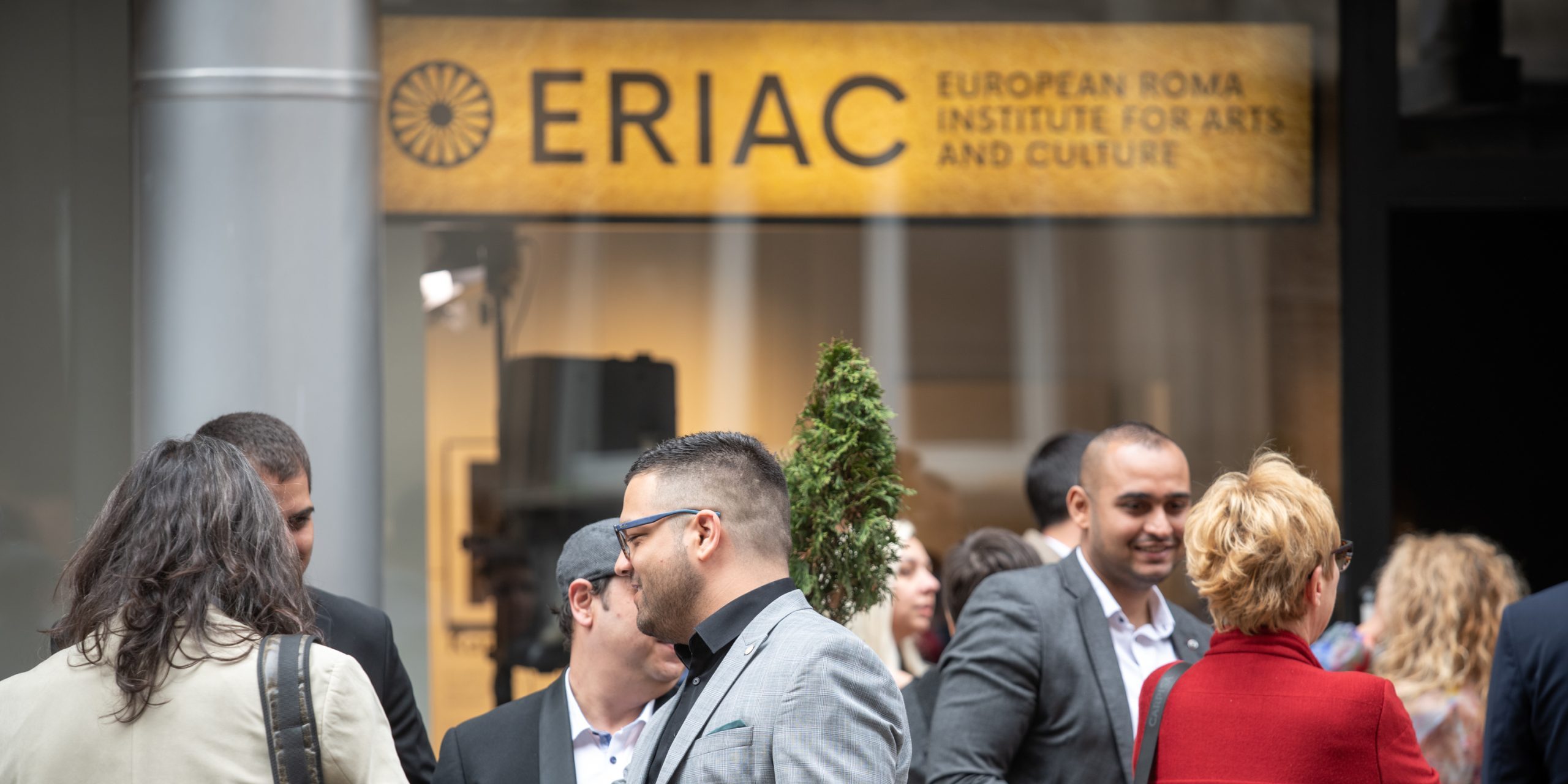
08.04.2022, Belgrade ERIAC Serbia, International Roma Day
Hosted by:
April 8th is celebrated by Roma around the world as International Roma Day. This holiday marks the beginning of the Roma movement starting from 1971. The Roma movement, now living in Serbia for more than 50 years, has also contributed to the transnational Roma movement. Among the Roma movement visionaries of the world are also the names of Roma intellectuals from Serbia. From the very beginning, the Roma movement in Serbia puts culture at the center of its activities and sees it as the cornerstone of activism for the equal status of the Roma community in the society that belongs to it. International Roma Day is not only part of history and the memory of the beginning of the Roma movement but is also a symbol of the constant struggle and aspiration of the Roma towards a better future. It is a day when we celebrate our achievements and the culture we are proud of, with full awareness of the path we have yet to take to make our identity, talent and knowledge a recognized integrative part of the society in which we live.
European Roma Institute for Arts and Culture Serbia (ERIAC Serbia), together with the Regional Cooperation Council and the Opre Roma Serbia civic movement, celebrates International Roma Day on 8th April. On that occasion, a moderated panel discussion, Culture as Inspiration, will be organized in the premises of the ERIAC Serbia Gallery space in Belgrade, which will deal with the role of art and culture in the Roma movement. Osman Balic, president of the Roma League, Jelena Reljic, sociologist and activist of Opre Roma Serbia, Dragan Ristic, musician and producer and Zoran Tairovic, multimedia artist, will take part in the dialogue.
The panellists will, each from their perspective, try to answer the following questions:
Guests will have the opportunity to ask questions and participate in the discussion. As the discussion was broadcasted live on Facebook, viewers involved in the online program also had the opportunity to participate in the conversation.
After the panel discussion, there was a music performance. The program featured Iva Barcic, who performed jazz-style Roma music with his band Very Naiss.
PROGRAM:
11:00 – 11:10
Opening
Gelem Gelem, Silvija Nesic
Welcome
Jadranka Ivkovic, ERIAC Serbia
Orhan Usein, Roma Integration – Regional Cooperation Council
Stevica Nikolic, Opre Roma Serbia
11:10 – 12:10
Panel discussion Culture as inspiration
Osman Balic – director YUROM and president of Roma League
Jelena Reljic – sociologist and activist of Opre Roma Serbia
Dragan Ristic – musician, founder of KAL band
Zoran Tairovic – multimedia artist
Moderator – Silvija Nesic, musicologist
12:10 – 12:40
Musical performance
Iva Barcic and Very Naiss orchestra
12:40 – 13:00
Reception

03.02.2022, Belgrade ERIAC Serbia, German officials visit ERIAC Serbia
As a part of Mr. Ahmetović’s five days visit to the Balkans, while being in Serbia, he expressed the willingness to meet with Roma representatives. The meeting was organized in our premises where we gave him a tour of our current exhibition, Romani Chib, presented ERIAC and discussed the situation of Roma inclusion from the perspective of opportunities in different areas. Speaking about our work, for us was the most important to emphasize the significance of art and culture in inclusion processes and how it reflects on the Roma community as well as on the atmosphere in society towards Roma. Mr. Ahmetović expressed his willingness to support us in our work and thanked us for such a warm welcome.
ERIAC Serbia hosted a meeting attended by:
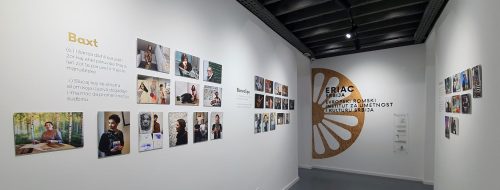
On view in the ERIAC Serbia gallery:
Location: Majke Jevrosime 51, Beograd, Serbia
Opening hours: Monday to Friday 10:00 – 17:00
Curators:
Timea Junghaus, ERIAC Executive Director
ROMA LANGUAGE
With the Art of Nihad Nino Pušija and Zoran Tairović
On the World Romani Language Day, celebrated on November 5, ERIAC SRBJIA features artworks of two exceptional artists to pay tribute to Roma cultural, and specifically linguistic, heritage.
Pušija’s powerful portraits of the most relevant Roma arts and culture personalities from across the world are associated with key concepts of the Romani culture, expressed in Romani language – Romani Čhib. Photography is the most historically complex and problematic genre to ever appropriate the Roma subject. Will Roma ever be able to dissociate themselves from the traumatizing – sexualizing, feminizing, and criminalizing – practices of photographic representation used throughout the history of anthropology and ethnography? And has it become definitively impossible to turn and re-turn the photographic gaze?
Since his first exhibition in Sarajevo (1988), the questions sketched out above have been central to the work of the artist and photographer Nino Nihad Pušija. He continues to offer new ways to create and perceive authentic images while dealing with anti-Roma prejudices and their political consequences, such as deportation and assimilation. In doing so, he contributes to the contemporary European art scene’s ongoing critical analysis of the role that pictures of so-called ‘others’ play in the self-image of those portrayed.
His series of portraits of internationally known Romani artists and activists was shown for the first time in 2020 at the European Roma Institute for Arts and Culture (ERIAC).
Pušija’s photographs are accompanied by the “Tarot Card Triptych” by Zoran Tairović, one of the most iconic Roma artists in Serbia. Tairović takes us on a journey through history and art from a fresh perspective. Tairović’s inspiration is the Great Arcana cards (an ancient pack of tarot cards made by an unknown Roma artist in North-Western Spain), which were discovered under mysterious circumstances in Provence, and are now part of the Moment of Movement collection.
[Romanes]
ROMANI ČHIB
Le artasa katar o Nihad Nino Pušija thaj o Zoran Tairović
Ando Internacionalo Dives le Romane Čhibjako, kaj kerel pes ando 5-to Novembro, o ERIAC SERBIA sikavel artake butja katar duj bare romane artisturja, te del pakiv pal o romano kulturalo thaj lingvistikano barjaripe.
E zorale portreturja kerde katar o Pušija pal e maj džangle romane bare manuša opral sasti phuv andar i arta thaj andar i romani kultura si phangle ke vašno koncepturja le romane kulturake, sikavde andi romani čhib. I fotografia si o anguno historikano maj pharo thaj problematikano geno kaj lel samate o subijekto le romengo. Si te šaj e roma dajekhvar te čhinaven pes katar e fotografiake praktike kaj sas kerde ande historia le antropologiaki thaj le etnografiaki, save ande lenge traume, sikavindos len ande jekh seksualizime thaj kriminalizime modo? Thaj aresljas pes ande jekh momento kaj našti te paruvel pes e fotografiaki perspektiva?
Katar leski angluni ekspozicija ando Sarajevo (1988) e pučimata kaj thodjam maj opre sas but vašno ande opera kadale artistoski thaj fotografoski Pušija. Vov džal maj duj thaj sikavel neve droma te keren pes thaj te hakjaren pes autentikane imagine, lindos samate, ande sajekh data, e prežutekate kontra e roma thaj lenge politikane efekturja, sar si i deportacija thaj i asimilacija. Kerindos kado, vov anel peski kontribucija ke kritikani analiza pal e akanutni evropuni arta thaj k-o rolo kaj khelen les e fotografie „akalavrenge“ ande imagina kaj si kodole manušen pal peste. Leski portreturjengi seria pal e internacionalo prinžarde artisturja thaj aktivisturja si sikavdi angluno drom kathe k-o ERIAC.
Pašal e fotografie kerde katar o Pušija si „e Tipično Tarot lila“ kerde katar o Zoran Tairović, jekh andar e maj mišto dikhle romane artisturja andar i Serbia. O Tairović phiravel amen pe jekh drom artako thaj historiako pal jekh nevi perspektiva. O Tairović lel peski inspiracia andar e lila le Bare Arkanake (jekh but purano paketo Torot lilengo kerde katar jekh bidžanglo romano artisto andar i Nord-Vestikani Spania), thaj si akana kotor andar i kolekcia Momento Miškimasko.
[Srpski]
ROMSKI JEZIK
Praćen umetnošću Nihada Nina Pušije i Zorana Tairovića
Na Svetski dan romskog jezika, koji se proslavlja 5. novembra, ERIAC SRBIJA predstavlja umetnička dela dva izuzetna umetnika, kako bi se odala počast romskoj kulturnoj, a posebno jezičkoj baštini.
Pušijini moćni portreti najznačajnijih romskih umetničkih i kulturnih ličnosti iz celog sveta povezani su sa ključnim konceptima romske kulture, izraženim na romskom jeziku – Romani Čhib. Fotografija je istorijski najkompleksniji i najproblematičniji žanr koji je ikada predstavio romsku temu. Da li će Romi ikada moći da se odvoje od traumatizirajućih – seksualizirajućih, feminizirajućih i kriminalizirajućih – praksi fotografskog predstavljanja korišćenih kroz istoriju antropologije i etnografije? Da li je postalo nemoguće pokrenuti i ponovo okrenuti fotografski pogled? Od njegove prve izložbe u Sarajevu (1988), gore pomenuta pitanja bila su centralna za rad umetnika i fotografa Nina Nihad Pušije. On nastavlja da istražuje nove načine za stvaranje i percepciju autentičnih slika dok se bavi antiromskim predrasudama i njihovim političkim posledicama, kao što su deportacija i asimilacija. Čineći to, on doprinosi stalnoj kritičkoj analizi savremene evropske umetničke scene uloge koju slike takozvanih „drugih“, portretisanij igraju u slici o sebi. Njegova serija portreta međunarodno poznatih romskih umetnika i aktivista prikazana je prvi put 2020. godine u Evropskom romskom institutu za umetnost i kulturu (ERIAC).
Pušijine fotografije prati i „Triptih tarot karata” Zorana Tairovića, jednog od najpoznatijih romskih umetnika u Srbiji. Tairović nas vodi na putovanje kroz istoriju i umetnost iz nove perspektive. Tairovićeva inspiracija su velike karte Arkane (drevni paket tarot karata koje je napravio nepoznati romski umetnik u severozapadnoj Španiji), koje su otkrivene pod misterioznim okolnostima u Provansi, a sada su deo kolekcije Moment of Movement.
Biographies of the artist
[english]
Nihad Nino Pušija born in Sarajevo, Bosnia and Hercegovina is an art photographer. His work focuses on documentary and portrait photography and aims at capturing Roma identity in Europe, especially in Berlin, where he has been based for the past twenty-eight years. Since 1992 Pušija has been working on different art projects and photo studies supported by the nGbK Berlin (New Society for Visual Arts), Museum of European Cultures, and Allianz Cultural Foundation. . His main topics are the politics of recognition, minority positions in contemporary artistic and curatorial practice, Southeast Europe, refugees, conflict resolution, integration and Roma in Europe. He was part of the 1st and 2nd Roma Pavilion at the Biennale Arte in Venice in 2007 and 2011.
[romanes]Nihad Nino Pušija bijando ando Sarajevo, Bosnia thaj Hercegovina si jekh ar tistikano
fotografo. Leski buki lel sama te e dokumentarurja thaj portretoske fotografie thaj mangel te sikavel i romani identiteta and-i Evropa, specialo ando Berlino, kaj vovdzivisardja ande palutne biš thaj oxto berša. Katar o berš 1992, o Pušij a kerdjas buki ande verver artake projekturja thajfotografijake studije save sas len supor to katar nGbK Berlin (NeviSocieteta vaš Vizualo Arte), O Muzeo vaš Evropake Kulture thaj i Alianca e Kulturalo Fondacijengi. Leske maj vašno topike si e prindzarimaske politike, e minoritetenge thana ande akanutneartistikane thaj kuratorilo praktike, e Sudestikani Evropa, e našlemanuša, konfliktoske rezolucije, integracija le romengi andeEvropa. Vov ljas kotor k-o anglutno thaj k-o dujto Romano Paviliono ke Biennale Arte and-i Venecija ando berš 2007 thaj 2011.
[srpski]Nihad Nino Pušija, rođen u Sarajevu, Bosna i Hercegovina je umetnički fotograf. Njegov rad se fokusira na dokumentarnu i portretnu fotografiju i ima za cilj da dočara romski identitet u Evropi, posebno u Berlinu, gde živi poslednjih dvadeset osam godina. Od 1992. godine Pušija radi na različitim umetničkim projektima i foto studijama koje podržavaju nGbK Berlin (Novo društvo za vizuelne umetnosti), Muzej evropskih kultura i Allianz Cultural Foundation. Njegove glavne teme su politika priznanja, manjinske pozicije u savremenoj umetničkoj i kustoskoj praksi, jugoistočna Evropa, izbeglice, rešavanje sukoba, integracije i Romi u Evropi. Bio je deo prvog i drugog romskog paviljona na Bijenalu umetnosti u Veneciji 2007. i 2011. godine.
[english]Zoran Tairović, born in 1966 in Novi Sad, Serbia, is an academic painter and a multimedia artist with a doctoral degree in interdisciplinary studies in applied arts management, an activist, and Director of the Intercultural Theatre. Winner of prestigious world awards for painting, author of the first Roma opera and musical, and also many award-winning documentaries. He has participated with his artistic performances in many important festivals and events in Serbia and around the world. Zoran’s achievements are wide-ranging and tireless, including published literary works, music compositions, art exhibitions, works in public spaces, lectures, curatorial work, videos, and films. Professionally, Zoran has excelled in several spheres, with positions as the founder of the Albert Hall Museum for Conceptual Art in Bódvalenke, Hungary, as Member of the Presidency, as President of the Committee for Culture of the League of Roma, and as Adviser to the Vice President of the Republic of Serbia for Roma issues.
[romanes]O Zoran Tairović, biando ando Novi Sad, Serbia, si jekh akademikano piktoro thaj multimedia artisto savo si les doktoratosko grado pal interdiscioplinaro studie, pal e aplikuime arte thaj manadžemento, si aktivisto thaj Direktoro katar o Interkulturalo Teatro. Liljas but uče lumjake prizurja vaš i piktura, autoro katar i angluni romani opera thaj muzikalo thaj vi katar dokumentarurja kaj lile prizurja. Ljas kotor peske artistikane spektakoljenca ke but festivalurja thaj vaš iventurja andar i Serbia thaj opral sasti phuv. E butja kerde katar o Zoran si bare thaj na thinjon nijekhdata, si andre literaro butja dine avri, muzikake kompozicie, artake ekspozicie, artake butja kerde ande publikane thana, vakjarimata, kuratorialo butja, videoklipurja thaj filmurja. Sar profesionisto, o Zoran vazdinjas pes ande maj but domenurja, sas les pozicie sar fondatoro katar o Muzeo pal i Konceptualo Arta Albert Hall andar o Bódvalenke, Ungaria, sar membro ki prezidencia, sar prezidento katar o Komiteto vaš i Kultura le Romane Ligaki thaj sar Advaizero vaš romane butja le Vice-Prezidentosko andar i Serbikani Republika.
[srpski]Zoran Tairović, rođen 1966. godine u Novom Sadu, u Srbiji je akademski slikar i multimedijalni umetnik sa doktoratom interdisciplinarnih studija menadžmenta primenjenih umetnosti, aktivista i direktor Interkulturalnog teatra. Dobitnik prestižnih svetskih nagrada za slikarstvo, autor prve romske opere i mjuzikla, kao i mnogih nagrađivanih dokumentarnih filmova. Svojim umetničkim nastupima učestvovao je na mnogim značajnim festivalima i manifestacijama u Srbiji i svetu. Zoranova dostignuća su široka i nepresušna, uključujući objavljena književna dela, muzičke kompozicije, umetničke izložbe, radove u javnim prostorima, predavanja, kustoski rad, video zapise i filmove. Profesionalno, Zoran se istakao u nekoliko sfera, na pozicijama kao što su osnivač Muzeja konceptualne umetnosti Albert Hol u Bódvalenke u Mađarskoj, kao član predsedništva, kao predsednik komiteta za kulturu Lige Roma i kao savetnik potpredsednika Republike Srbije za romska pitanja.
Download the Romani Chib Handout at the link below:

02.08.2021, Belgrade ERIAC Serbia, European Roma Holocaust Memorial Day
Hosted by:
On the night of the 2nd August 1944 about 4300 Roma men, women, and children – the remaining prisoners of the so-called “Family Camp” (Zigeunerfamilienlager) in Auschwitz-Birkenau concentration camp were killed in gas chambers. They are among hundreds of thousands of victims of the Roma Holocaust, killed by the Nazis and their allies.
In memory of these innocent victims and all Sinti and Roma who suffered horrific fate during World War II, August 2nd is commemorated as the Roma Holocaust Memorial Day. In 2015, the European Parliament adopted a resolution officially declaring August 2nd as the European Roma Holocaust Memorial Day; and since then the date has been adopted in many European countries.
With the rise of separation rhetoric, hate speech, and hate crimes, it is important to recall those dark moments in our history and learn from the lessons of the past. Roma Holocaust is still not a widely-known historical fact – it is rarely taught in school and is not part of the canon of Holocaust education. Beyond remembering the victims of the past suffering, we must not forget that today too many Roma face discrimination and are victims of hate speech and hate crimes in Europe. This is a day of remembrance, but also a grim reminder that we must not remain silent and fight against racism and anti-gypsyism in contemporary society.
The European Roma Institute of Arts and Culture Serbia (ERIAC SERBIA) together with Opre Roma Serbia and the Roma Education Fund (REF) are hosting a commemorative event to mark the Roma Holocaust Memorial Day. The main event which will take place in the gallery space of ERIAC Serbia in Belgrade will feature the screening of the documentary And You God Survived, followed by the discussion between Ljuan Koka, the documentary’s screenwriter, Milovan Pisari, director of the Centre for Applied History and Holocaust expert, Bajram Haliti, Roma scholar and Roma Holocaust expert, Jelena Krivokapić Nikolić, lawyer and activist of the Opre Roma Serbia and Redjepali Chupi, director of the Roma Education Fund. In parallel, Opre Roma Serbia is organizing a screening and panel discussion as the main event in Leskovac and other local communities in Serbia.
Following the screening, a moderated discussion will be held to address the following questions: What is the history of the Holocaust against Roma during World War II, and what are its ideological and social roots? How to increase the visibility of the history of genocide against Roma in public? How can we change the negative discourses about Roma that are predominant among the majority of society? What does it say about the youth’s susceptibility to new neo-Nazi ideologies and right-wing movements? What is the role of the education system in spreading knowledge and forming a more balanced view of Roma in society?
Guests at the screening will have the opportunity to ask questions and participate in the discussion. The event was also live-streamed on Facebook, allowing the local communities to participate in the discussion remotely.
PROGRAM:
17:00 – 17:10 Welcome
Bratislav Mitrović, Office Manager of ERIAC Serbia
17:10 – 17:40 Screening of the documentary And You God Survived
17:40 – 18:10 Panel discussion Roma Remember – Remembrance of the Holocaust
Ljuan Koka – the author of the documentary A ti bože preživi
Jelena Krivokapić Nikolić – lawyer and activist of the Opre Roma Serbia
Redjepali Chupi – director of the Roma Education Fund
Panel discussion moderated by Jadranka Ivković, Director of ERIAC Serbia
18:10 – 18:30 Reception
ABOUT DOCUMENTARY
The documentary A Ti Bože preživi (And You God Survived) was produced by Radio Television Prishtina in 1988, directed by Seljami Taraku, and written by Ljuan Koka. Through the vision of a comic book artist, the film shows the suffering of Roma in the concentration camp in Jasenovac. The remastered version of the film was made in 2014 with the support of the Ministry of Culture of the Republic of Serbia. The film features Simon Wiesenthal, Milan Bulajic and Dragojlo Lukic, and Roma camp survivors Stjepan Nikolic, Joko Nikolic and Milan Djurdjevic. The testimony of the former detainee Stjepan Nikolić in the scenes from the trial of Andrija Artuković, the Minister of Justice in the Independent State of Croatia, is especially dramatic. Horrible stories of unprecedented brutality turn into a comic black and white world and send a clear reminder that we must build a better and more humane world. And that we must not allow to ever forget the suffering.
„And You God… survive
And be smart
When you create a ghost again.”
(Roma folk song)
BIOGRAPHIES
Ljuan Koka was born in 1960 in Prizren. Screenwriter, journalist, author of several textbooks and books, a political scientist. He graduated from the Faculty of Political Sciences in Belgrade. He worked on comics in the period 1983-1987, as a screenwriter for Yu comic magazine. His most important comic series are: “Vorloh” and “Niti snova o moci”, “Shine on you crazy diamond” and “A Ti Bože preživi”. He had an extensive career as a media and socio-political worker, especially in the field of protection of national and ethnic minorities. He was a member of the National Assembly of the Republic of Serbia in the period 1993-2000. Author of a documentary film about the suffering of Roma in Jasenovac. Author of the first comic about the history of Roma “The Road of a Thousand Years” (2020). He lives and works in Belgrade.
Bajram Haliti – Ph.D. student at the Faculty of Business Studies and Law in Belgrade, journalist and publicist. He is the President of the Institute for European Roma Studies and Research on Crimes against Humanity and International Law. In 2012, he published the first drama in Serbian about the suffering of Roma during the Second World War in the ISC camps titled “Roma in the Hell of Jasenovac”. He is the winner of the plaque “Peace and Tolerance” for his contribution to the fight for peace, tolerance, and understanding among peoples and nations; plaques “for special merits and contribution to the improvement of the cultural and educational life of Roma, as well as for successes in developing Roma culture in the Republic of Serbia. Haliti is the author of several scientific papers on the suffering of the Roma during World War II.
Milovan Pisari – He received his doctorate in history in 2011 from the University of Venice. In his research, he deals with the Holocaust, genocide against Roma, anti-fascism, and the issue of the civilian population under occupation. He is the author of numerous articles in international professional journals, as well as publications and books on the suffering of Roma during the Second World War and the Holocaust. Since 2018, he has been one of the founders of the Center for Applied History, within which he develops programs and projects, acting as its director and historical researcher. He is currently a post-doctoral Fellow at Gerd Henkel Foundation.
Jelena Krivokapić Nikolić – Master of Law in the field of legal science and activist of the Movement for the Support of Roma in Serbia (Opre Roma Serbia). She has been involved in activism for more than 11 years. During her engagement in the Roma Forum of Serbia, she ran a legal counseling service and provided legal assistance to the Roma community. She is the author of numerous texts on the topic of discrimination against Roma men and women.
World Music Day is celebrated on June 21 every year, on the first day of summer. On this day, all

21.06.2021, Belgrade ERIAC Serbia, World Music Day
Hosted by:
World Music Day is celebrated on June 21 every year, on the first day of summer. On this day, all musicians, both amateurs and professionals, celebrate music and represent all musical genres and a variety of musical practices. Free concerts are a common practice in 120 countries that mark this holiday. Concerts are organized in halls, schools, amphitheaters, concert halls, parks, on the streets, and it is an opportunity to present less popular musicians to a wider audience. The goal of World Music Day is to provide free concerts throughout the day, and then the public areas are full of live music and participatory music creation. The National Theater in Belgrade, as one of the most representative and most important cultural institutions in Serbia, celebrates World Music Day with concerts every year.
The Roma have made and are making a great contribution to world music art. With their creation, they marked their musical creativity and left a special mark of Roma culture on the world music scene. That is why the European Roma Institute for Arts and Culture Serbia, in cooperation with the National Theatre in Belgrade, wanted to celebrate World Music Day. On that occasion, a half-hour concert of opera arias was organized. The concert was held in the premises of the European Roma Institute of Arts and Culture Serbia, on June 21, 2021.
Performers at the concert were:
Works by Antonio Vivaldi, Giuseppe Giordani, Gilles Masne and Vicenzo Bellini were performed at the concert. The Protocol of Cooperation between ERIAC Serbia and National Theatre was signed after the music performance.
You can see biographies of the artist in links below:
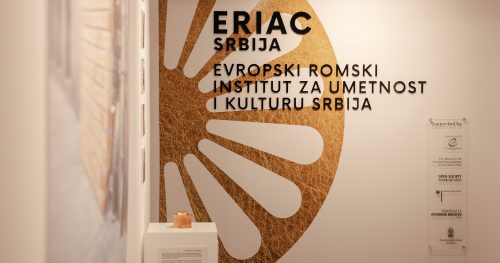
Belgrade 25.05.2021. Launching Ceremony of ERIAC Serbia and the Roma Education Fund In Belgrade, photo credit: OSF/Vladimir Zivojinovic
Serbian President Aleksandar Vučić, inaugurated the first branch of the European Roma Institute for Arts and Culture (ERIAC) and the new headquarters of the Roma Education Fund (REF).
Speaking about the launch, President Vučić said: “The opening of the European Roma Institute for Arts and Culture and the Roma Education Fund in Belgrade shows how much effort Serbia is investing in preserving the Roma language and culture, quality youth education, and greater Roma participation in public life, fighting discrimination, and respecting social equality and human rights. In this way, we are creating a better future for all citizens, because a better life for Roma means a better life for Serbia.”
Alexander Soros, deputy chair of the Open Society Foundations, welcomed Serbia’s unprecedented commitment:
“President Vučić has set a new standard for the Western Balkans—and Europe—by opening the first branch of ERIAC and helping the Roma Education Fund relocate to Belgrade. It is my hope that the other leaders of the region and Europe follow suit. My father George Soros and I have sought to advance Roma education, culture, Roma leadership, and economic entrepreneurship, and I am grateful that today we have greatly strengthened their effort.”
ERIAC aims to dispel prejudice and encourage Roma pride in its role in European history and culture. ERIAC is a joint initiative of the Council of Europe, the Open Society Foundations, and the Alliance for the European Roma Institute for Arts and Culture. The German government hosts ERIAC’s headquarters in Berlin.
Timea Junghaus, ERIAC Executive Director:
“For centuries, the Roma have contributed to the artistic and cultural heritage in Serbia and the entire region. Yet these contributions have often remained invisible. The establishment of ERIAC’s first branch is a historic milestone. It paves the way for ERIAC Serbia to become a leading stakeholder, promoting Roma cultural inclusion in the vibrant mainstream cultural scene in Serbia and the region.”
The same building also houses the Roma Education Fund, an organization working to increase the access of Roma children to education.
Redjepali Chupi, Interim Director of the Roma Education Fund (REF):
“REF wants to create a future in which everyone can develop their full potential and creativity. I am thrilled to welcome ERIAC into our community here in Belgrade. Together we are creating a powerful inner core, aimed at countering stereotypes and prejudices about our community.”
ERIAC SERBIA promotes Roma arts and culture in Serbia and the entire region, making a significant impact on the cultural recognition of Roma. Located in the city center at Majke Jevrosime St. 51, the ERIAC SERBIA office and art space occupy a total area of over 130 m2 on the ground floor, with a beautiful open space suitable for art exhibitions and events.
ERIAC Serbia opened at Majke Jevrosime 51 in Belgrade on 8 April 2021.
On the occasion of World Roma Day, in the context of an event on their new premises, ERIAC Serbia opened its doors to the media and representatives of state institutions and organizations, including the Ministry of Public Administration and Local Self-Government, Council of Europe, Regional Cooperation Council – Roma Integration and Roma Education Fund. All guests had the opportunity to view the new space, enter into dialogue with the ERIAC Serbia team, and share ideas about collaborative work and potential cooperation.
During these visits, two documentaries were screened: Romanistan Dialogue, produced by ERIAC, and Paper, Horse and Birds, produced by artist Zoran Tairović and supported by Open Society Foundation Serbia (OSFS). Media partners for the event were RTS, RTV, and Novi Magazin web portal.
The celebration of World Roma Day and the 50th anniversary of the First World Roma Congress hold special significance for Roma in Serbia and for ERIAC Serbia. Roma intellectuals from Serbia stand strong among the visionaries of the world Roma movement. From the very beginning, the Roma movement in Serbia has placed culture at the center of its activities, viewing culture as a cornerstone of activism for the equal status of the Roma community in society, as is befitting. This legacy reminds us that culture is an indispensable element of the constant struggle and aspiration of the Roma towards a better future.
ERIAC Serbia promotes the cultural values of Roma in Serbia through its activities, and opens their space for critical artistic review, for the exchange of creative ideas, the presentation of artistic achievements, and also for dialogue and development of mutual respect and understanding through expanding knowledge and a positive image of Roma. With the priority of promoting Roma arts and culture, and Roma identity, artists are offered the opportunity to present themselves through their own artworks. Institutional partnerships are crucial for the preservation and promotion of Roma identity. We look forward to a bright future with ERIAC Serbia.
European Roma Institute for Arts and Culture Serbia
Evropski Romski Institut za Umetnost i Kulturu Srbija
Majke Jevrosime 51, 11 000 Beograd
eriac.serbia@eriac.org
+381 11 6906139
Opening hours: Monday to Friday, from 09:00h to 17:00h